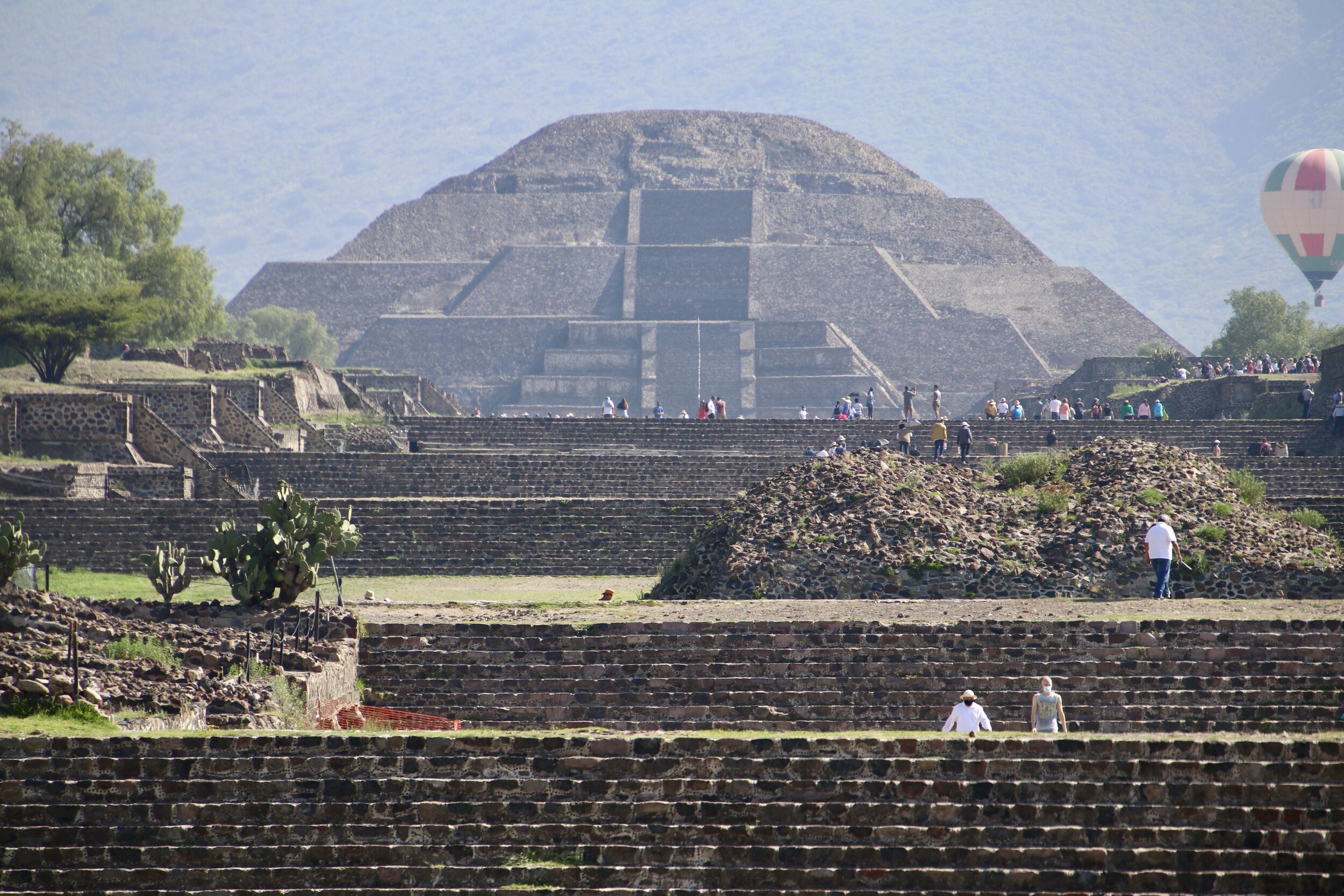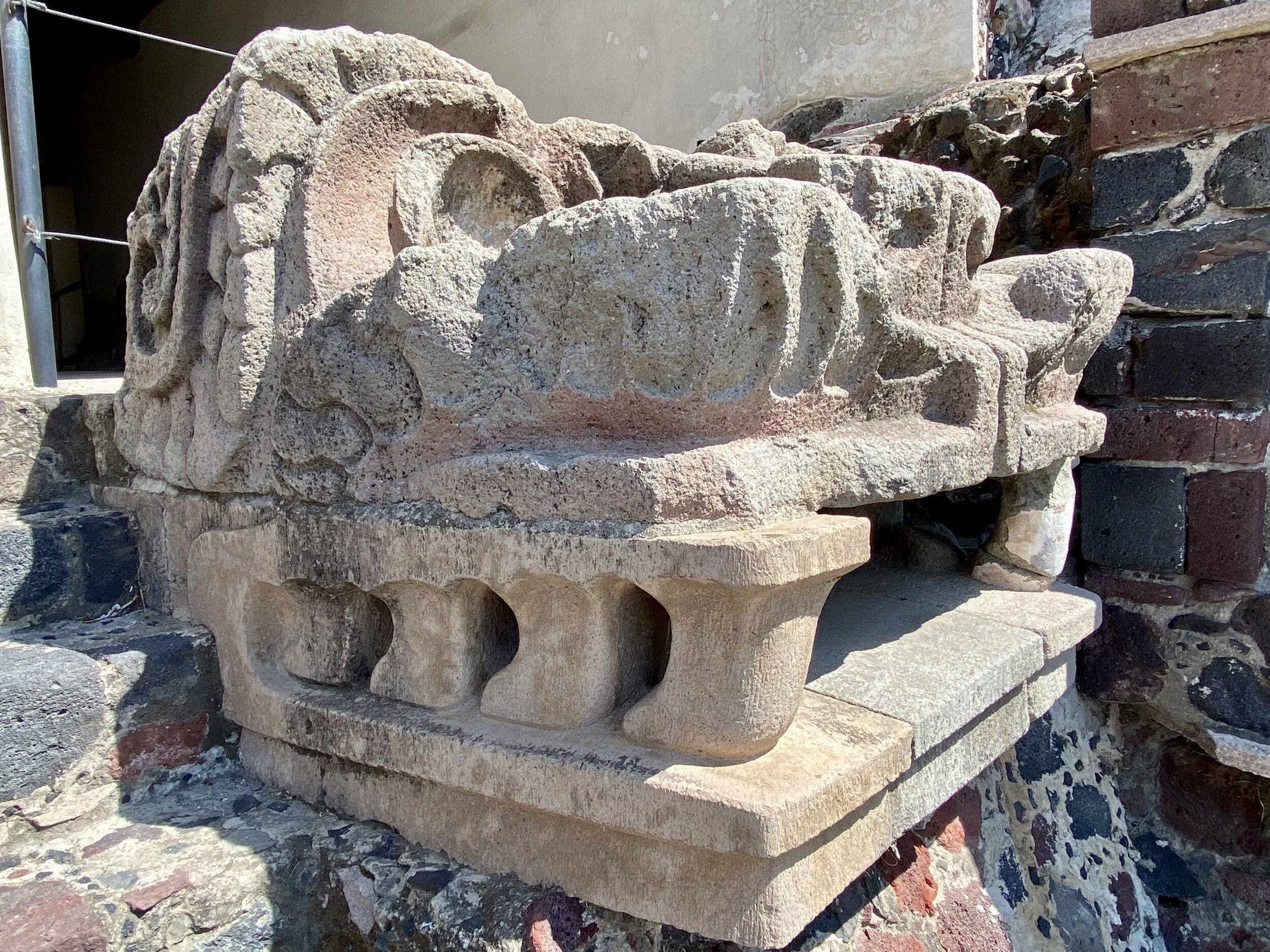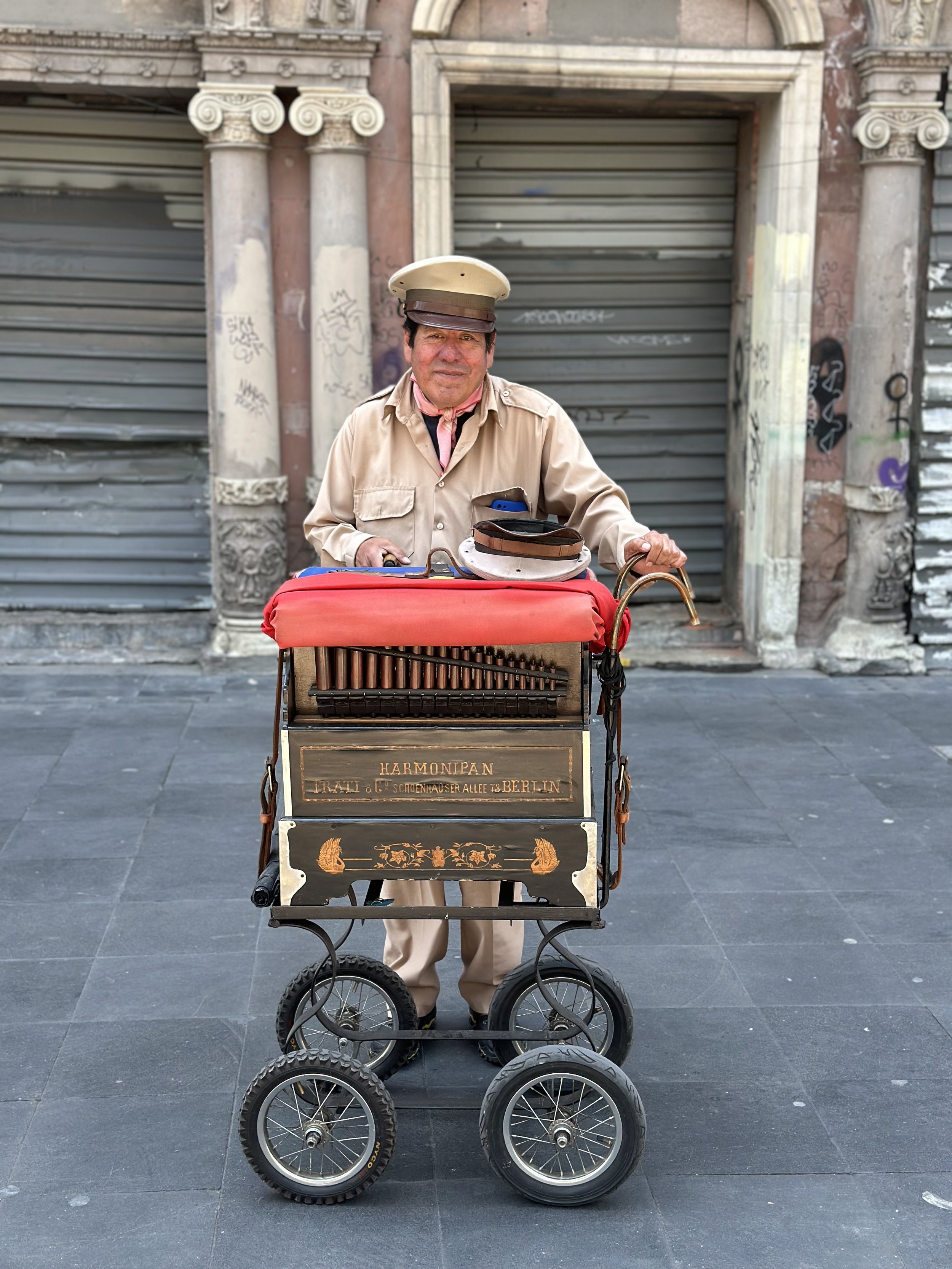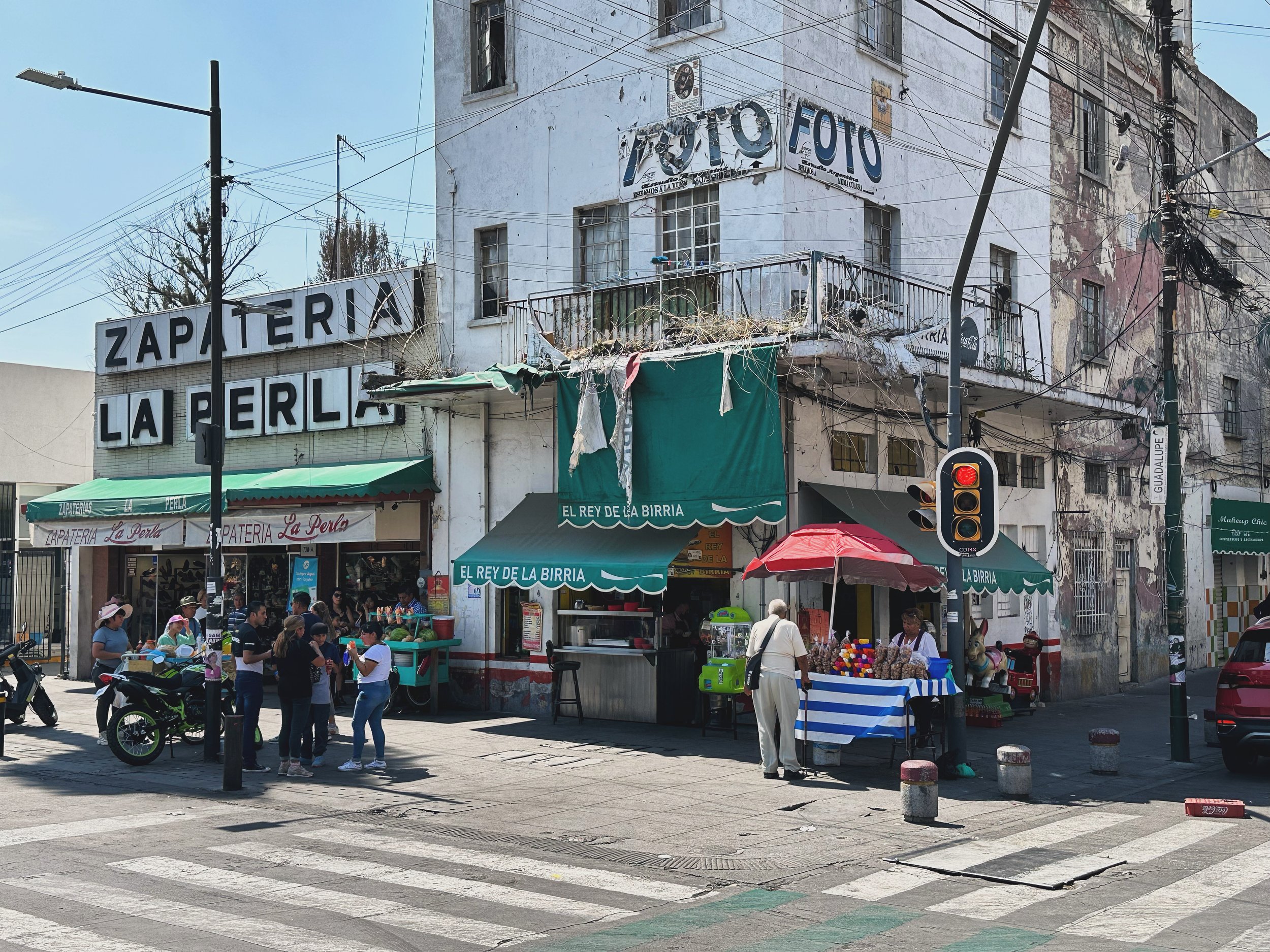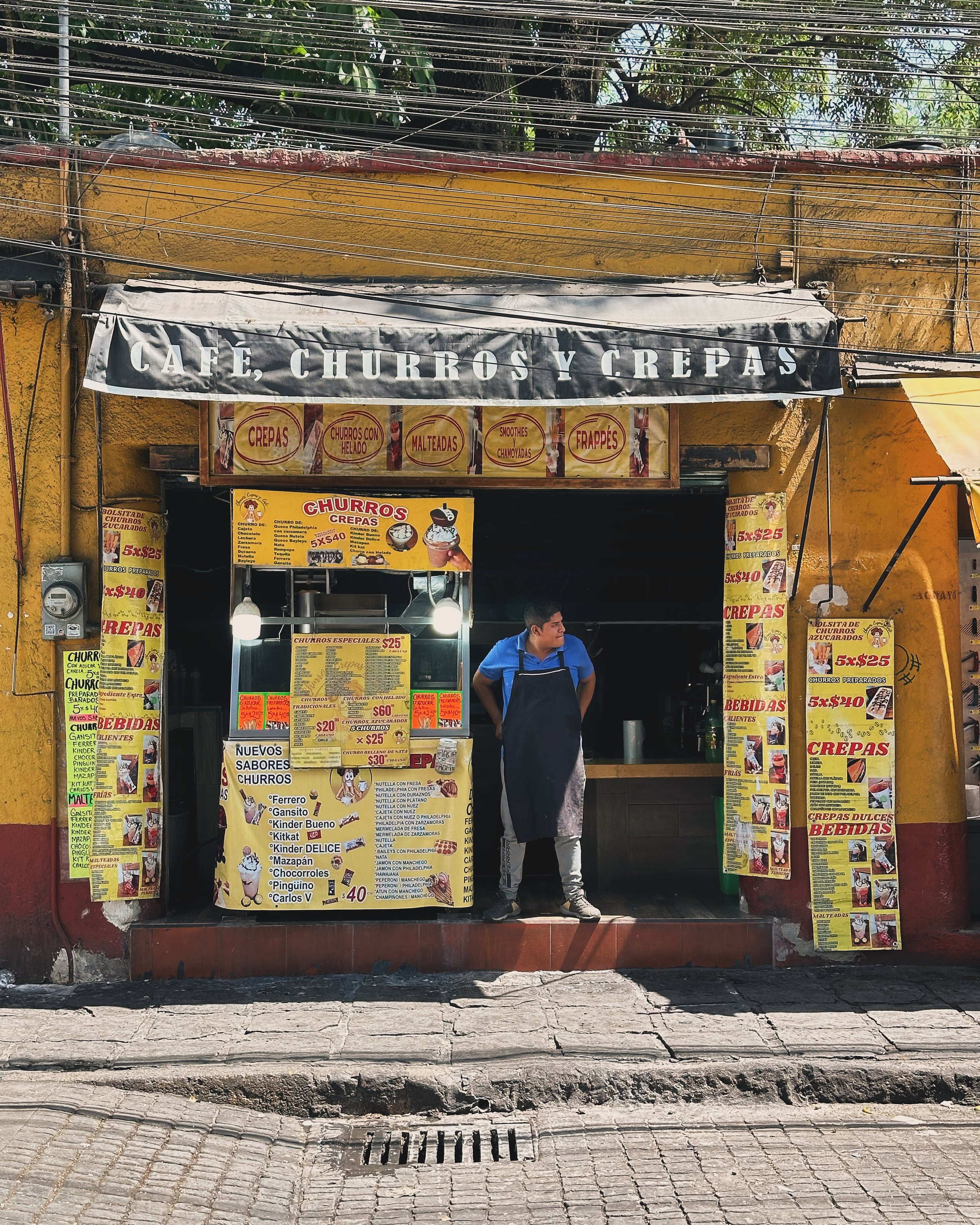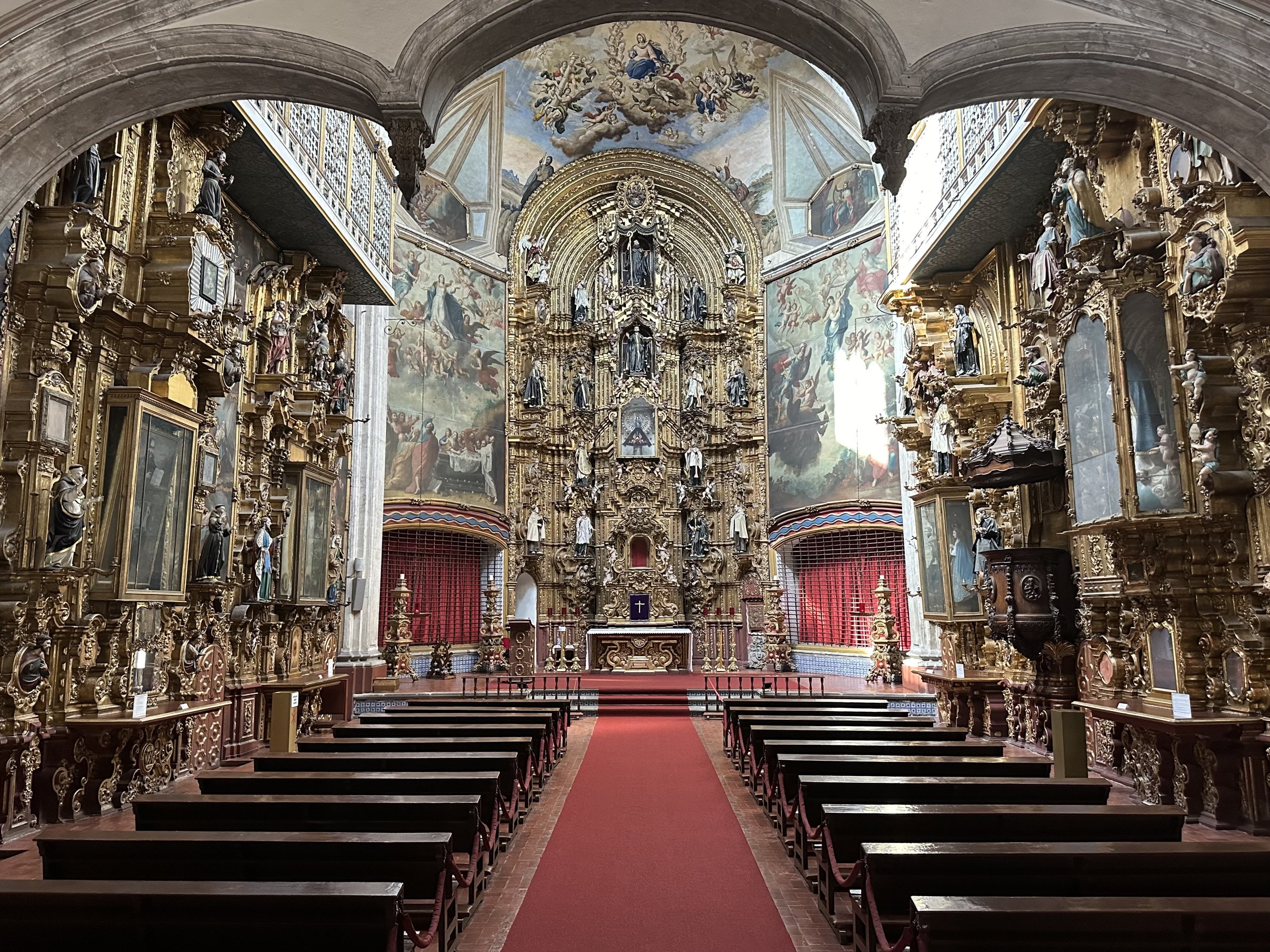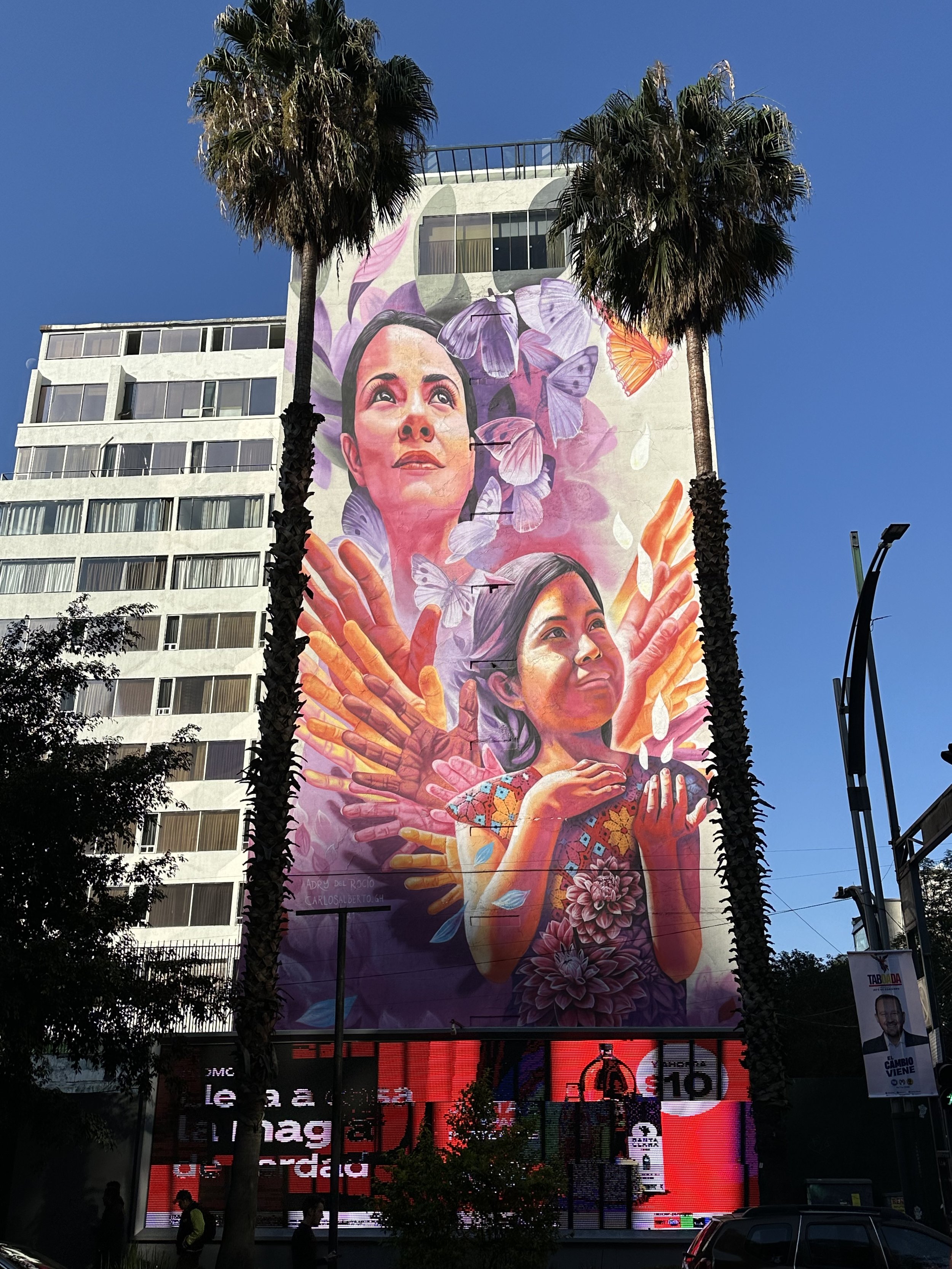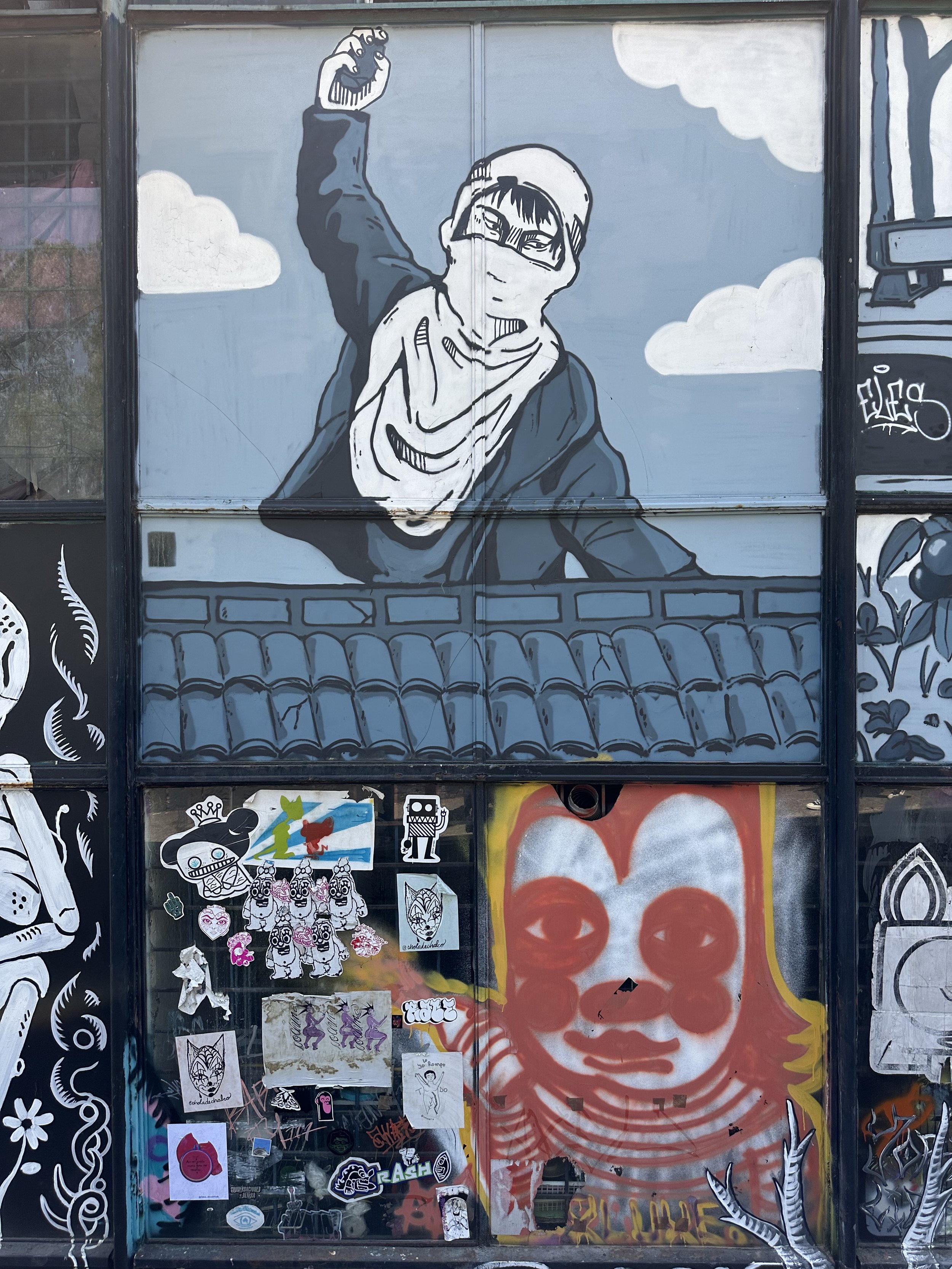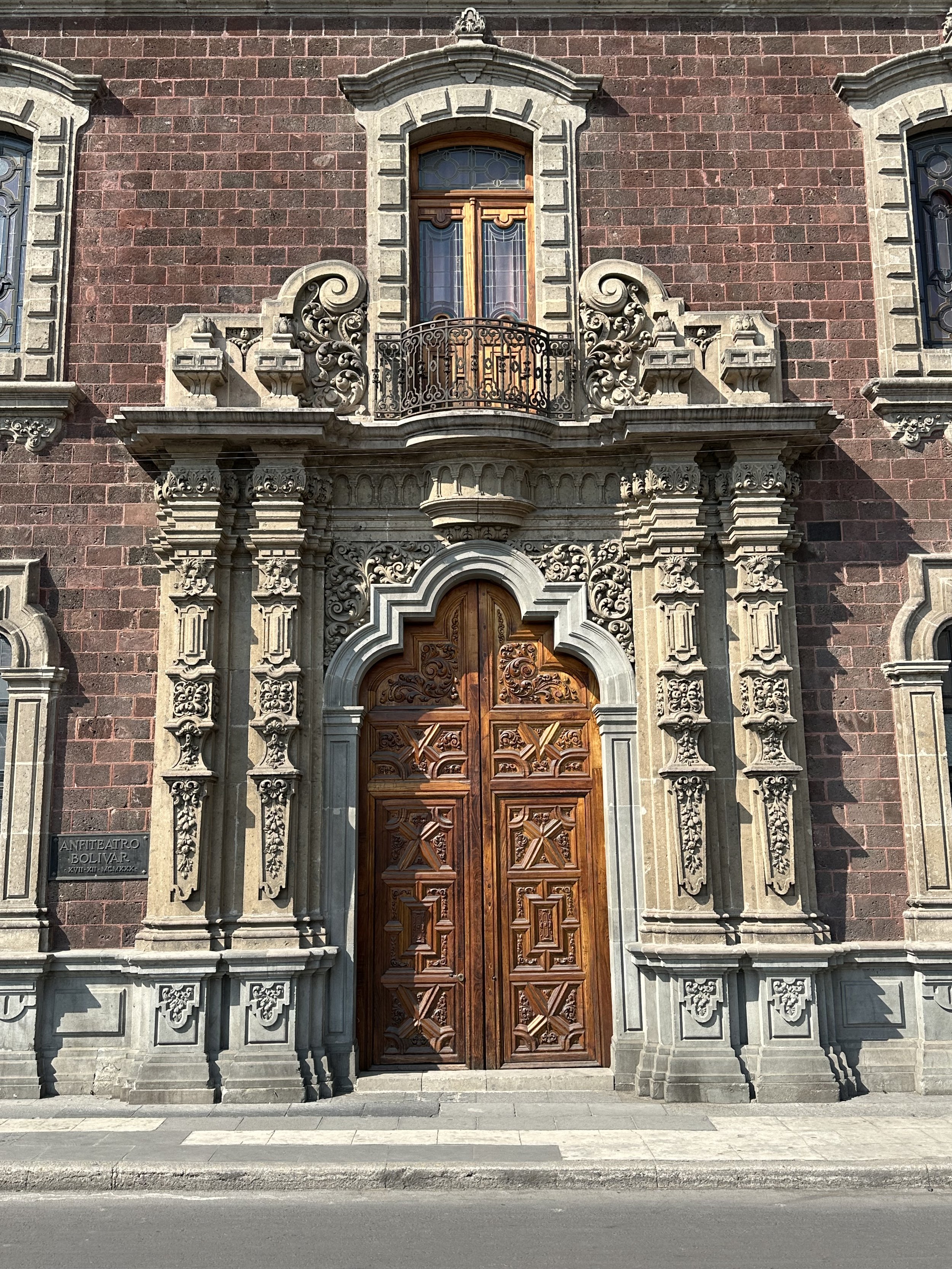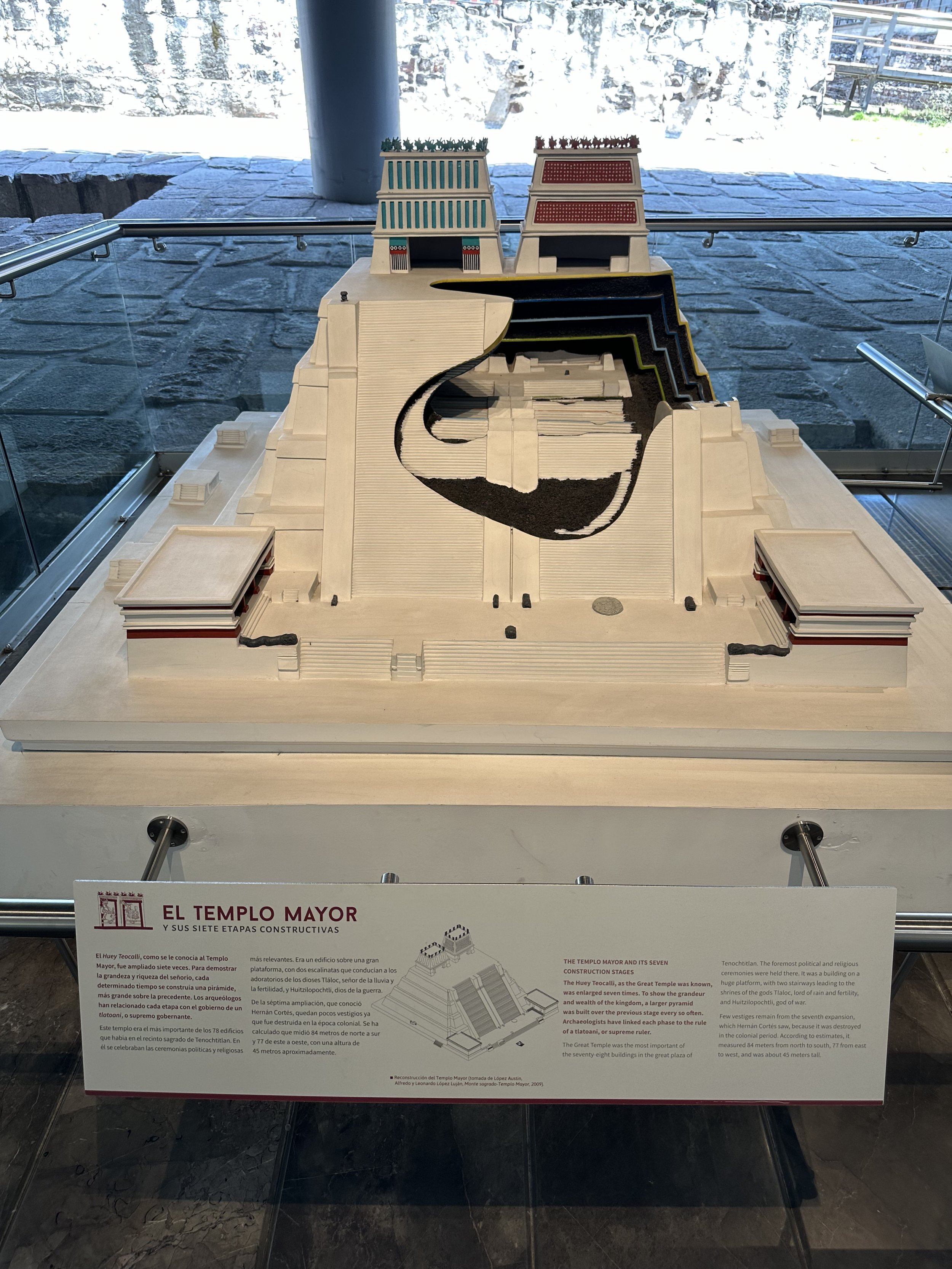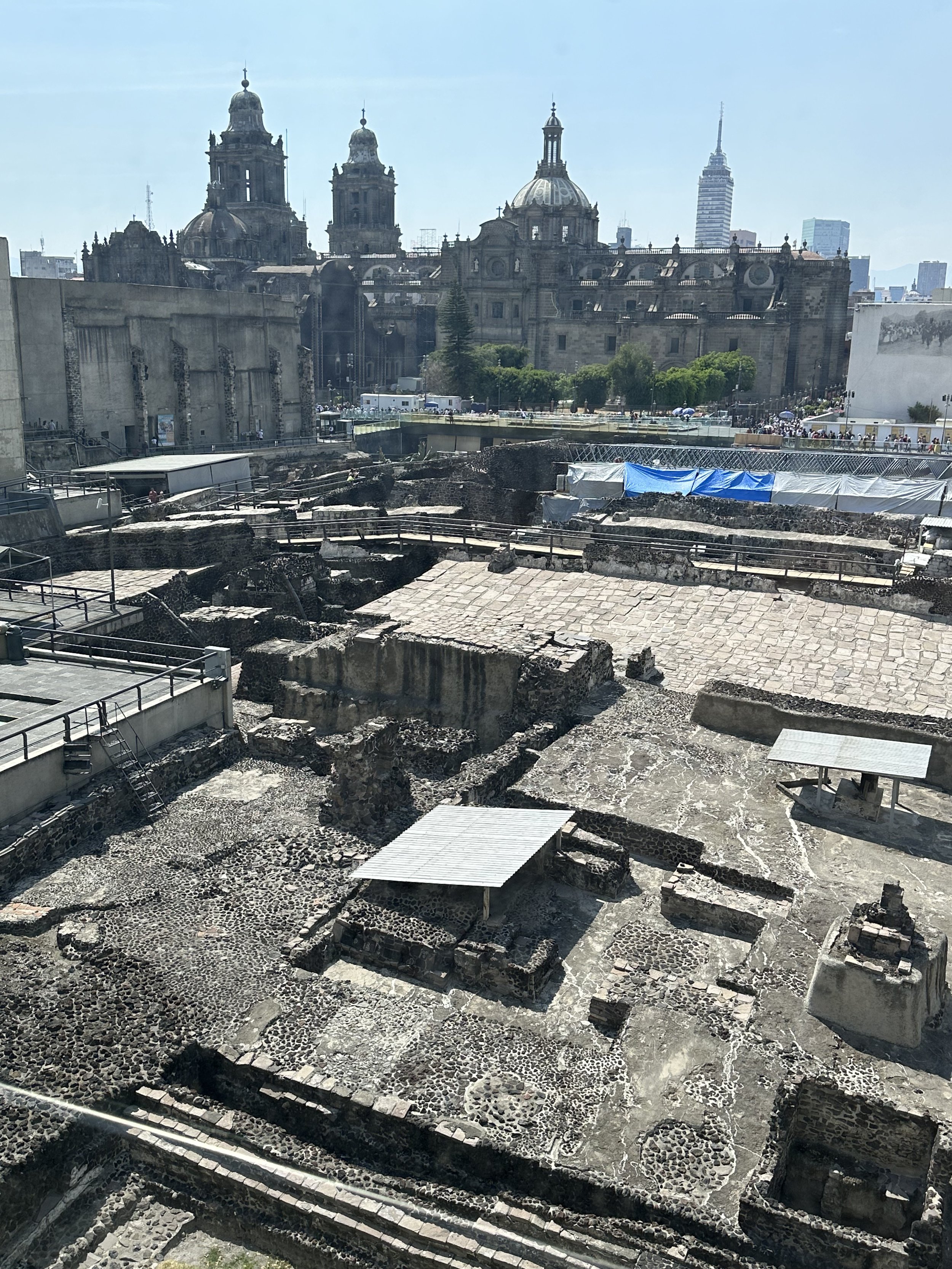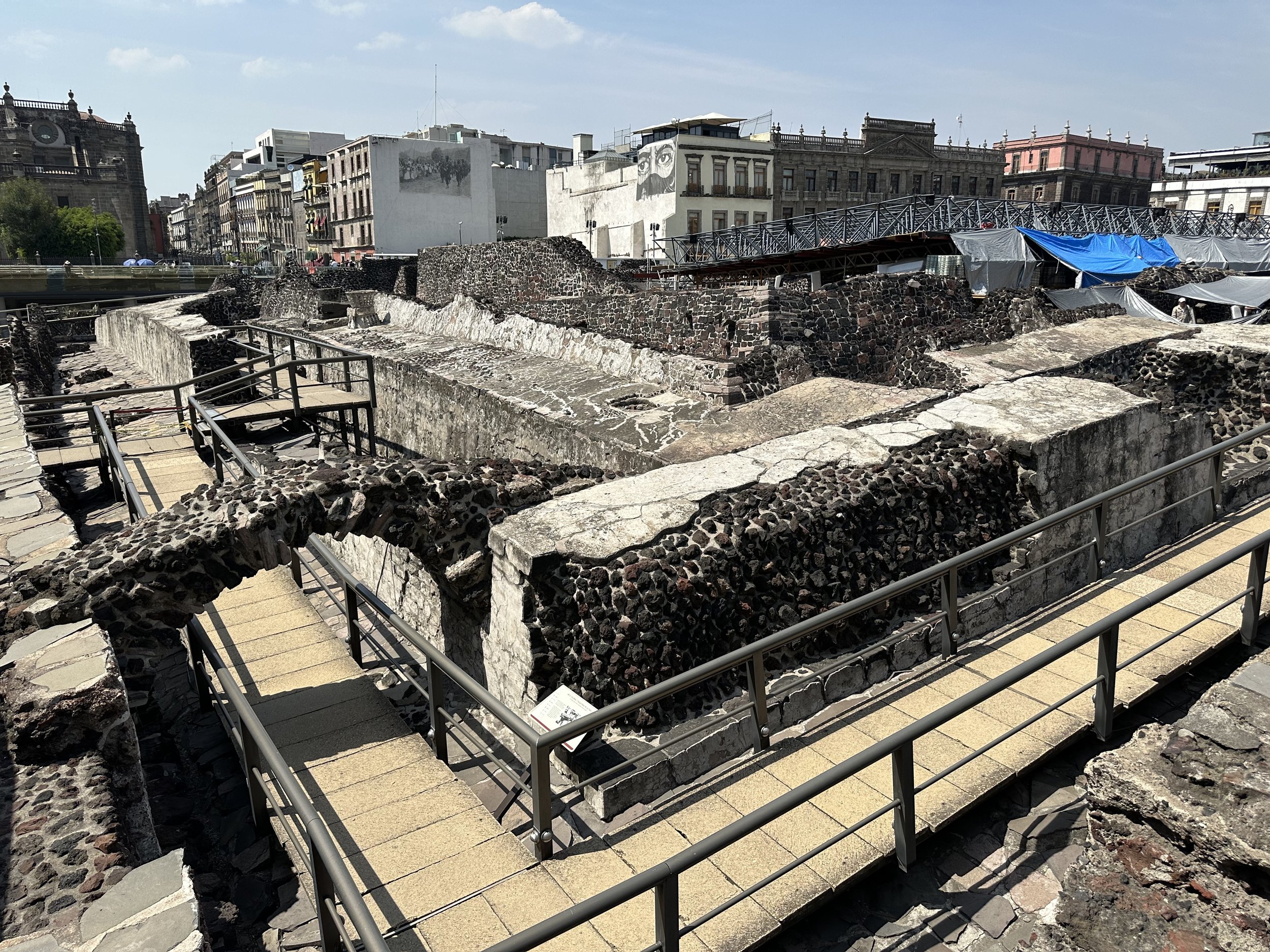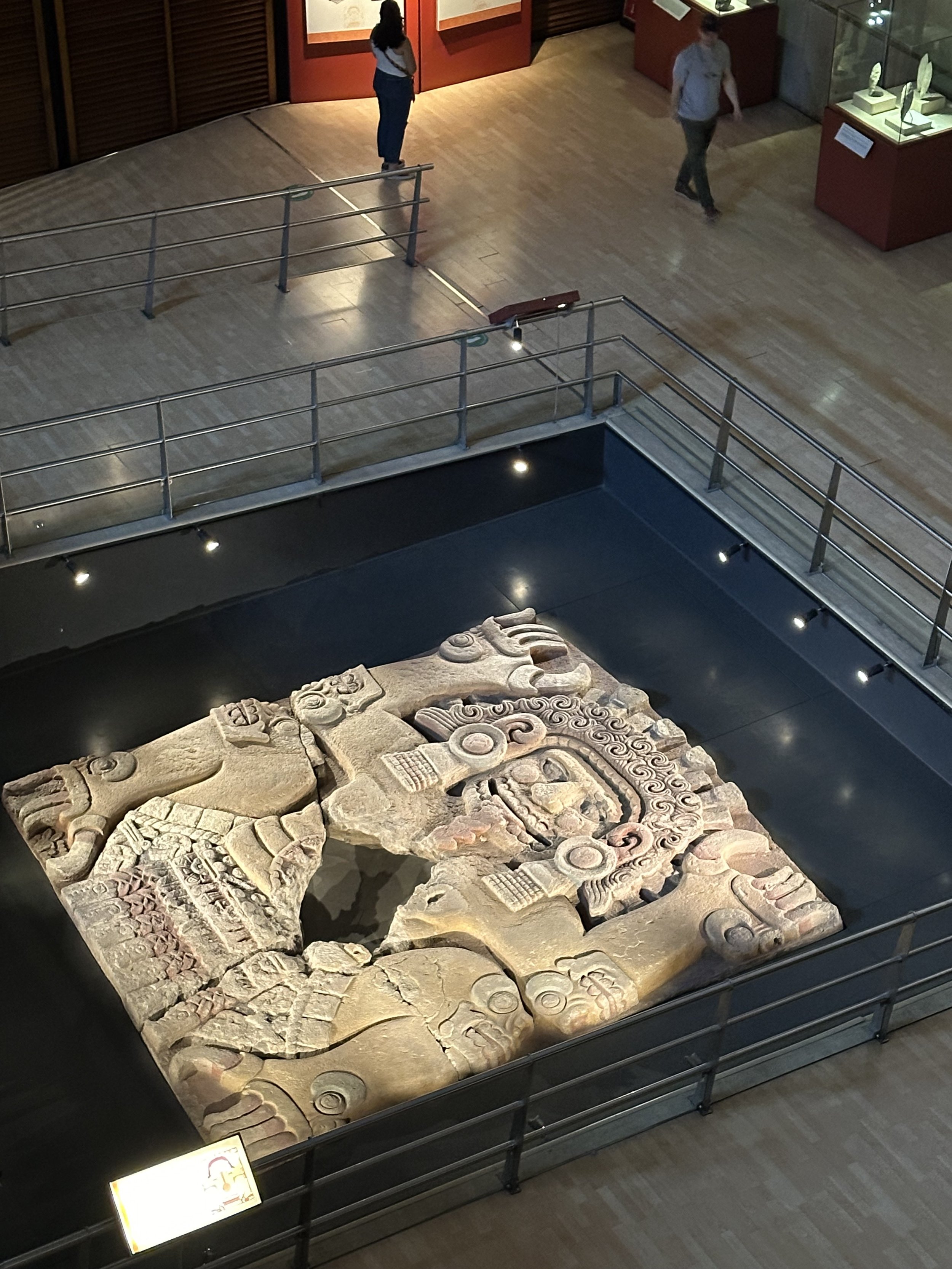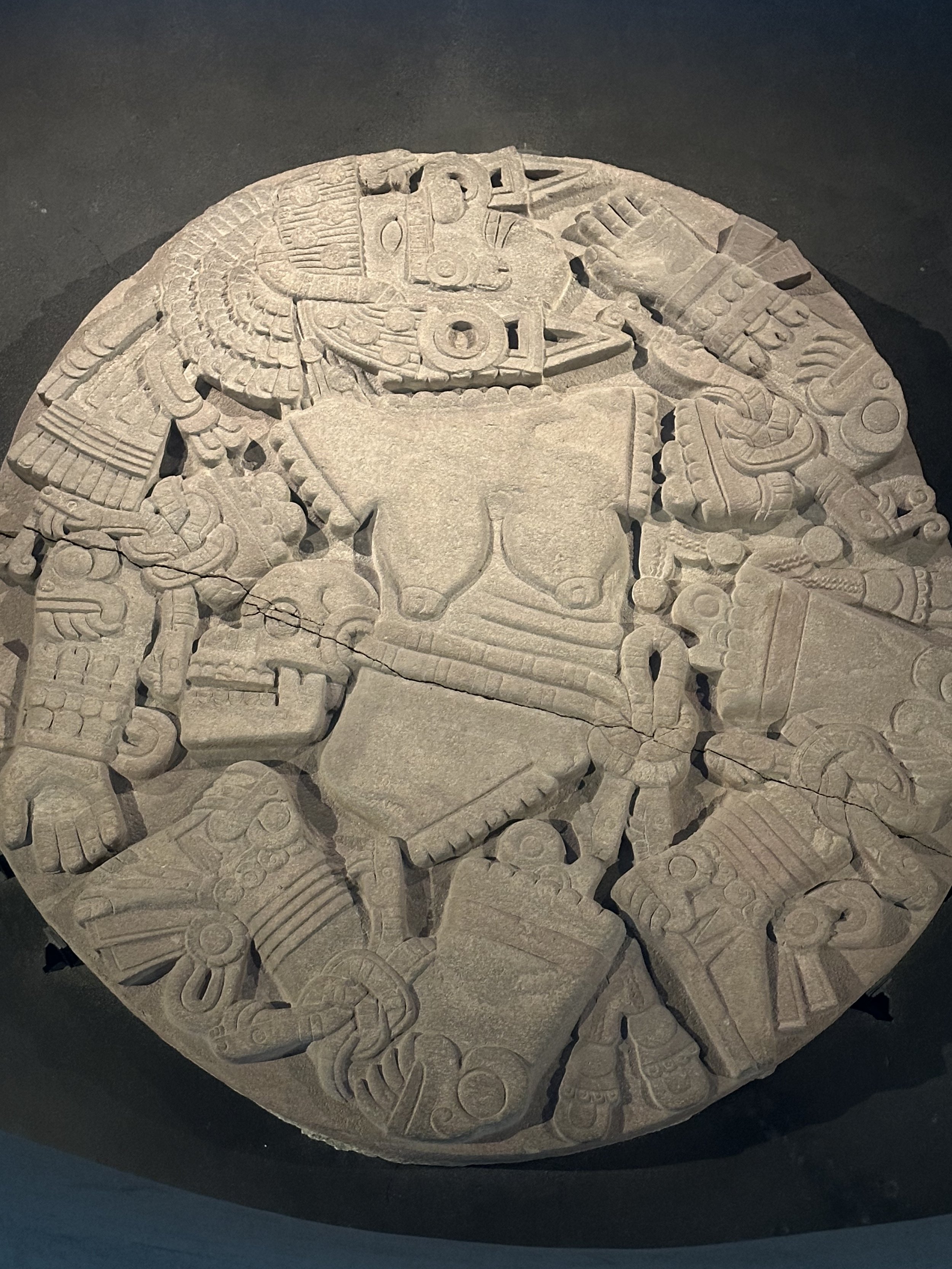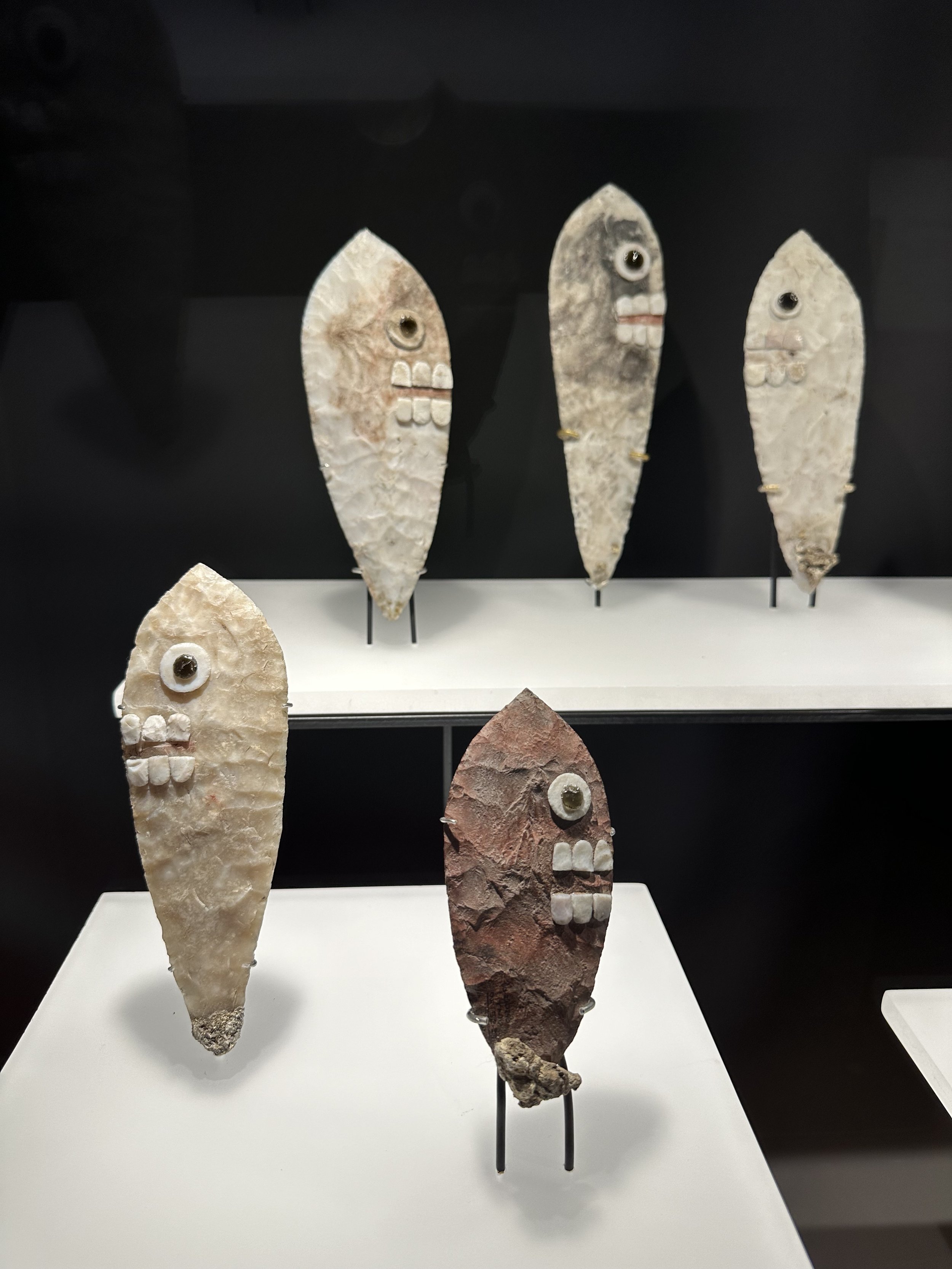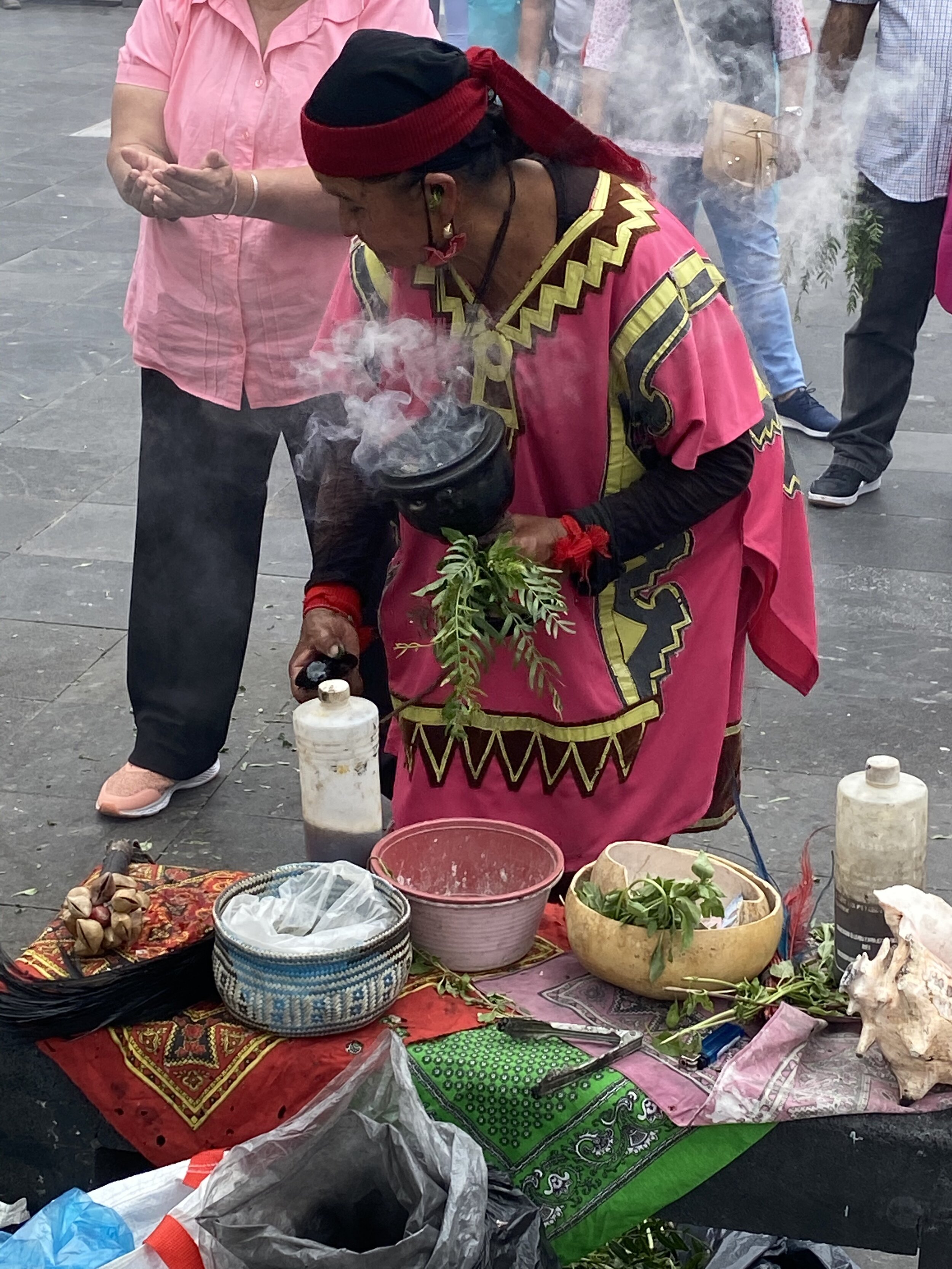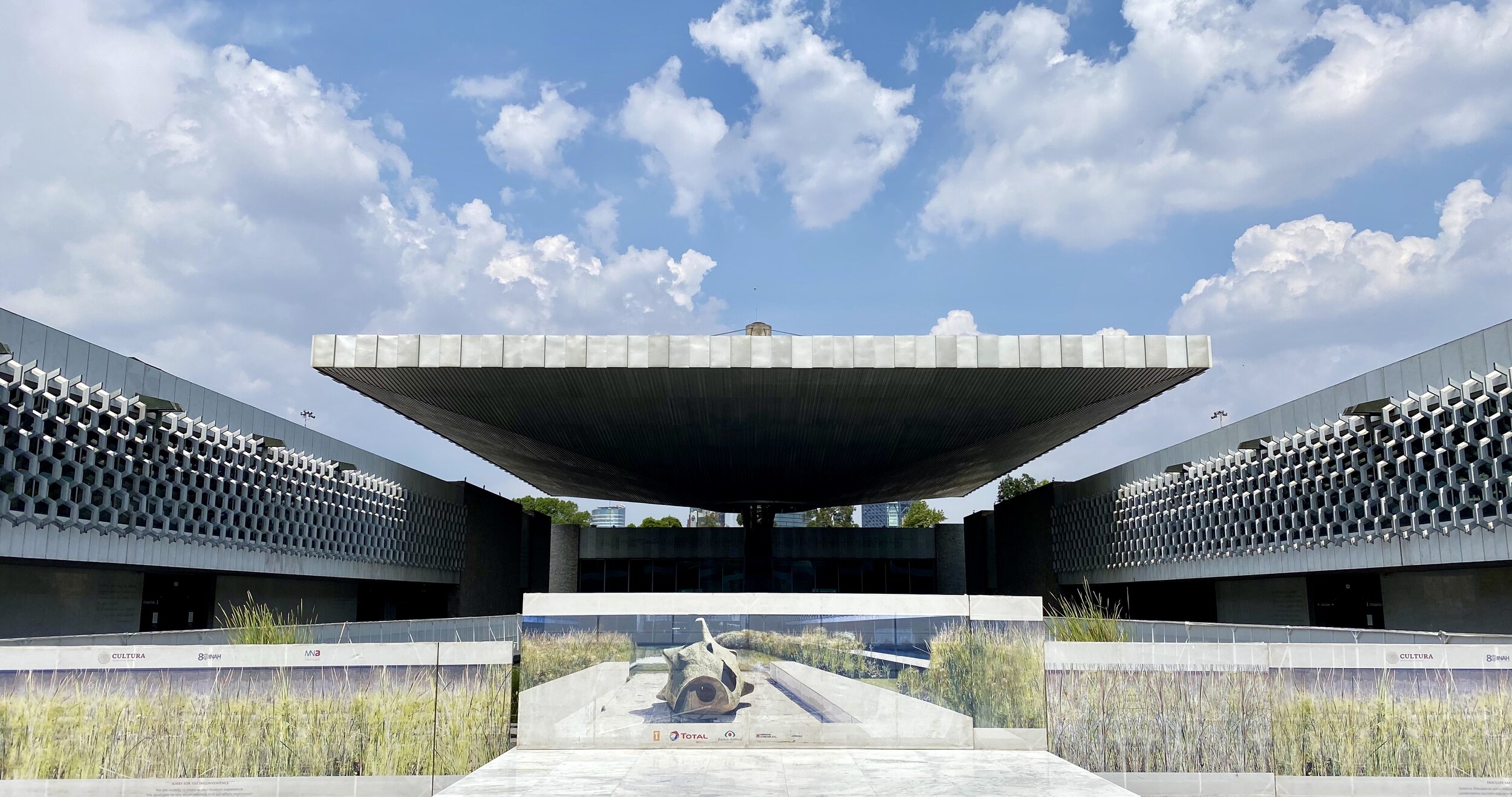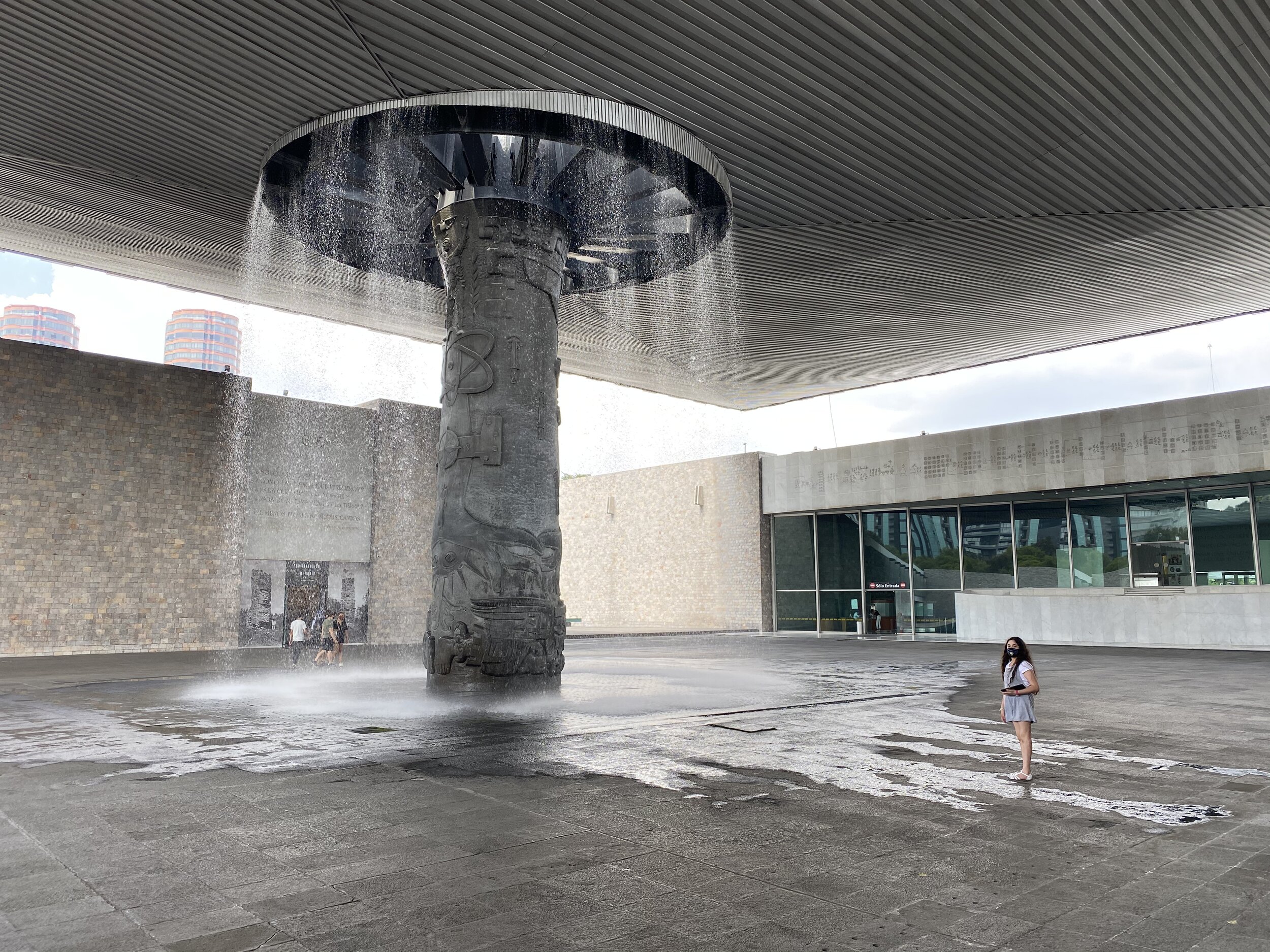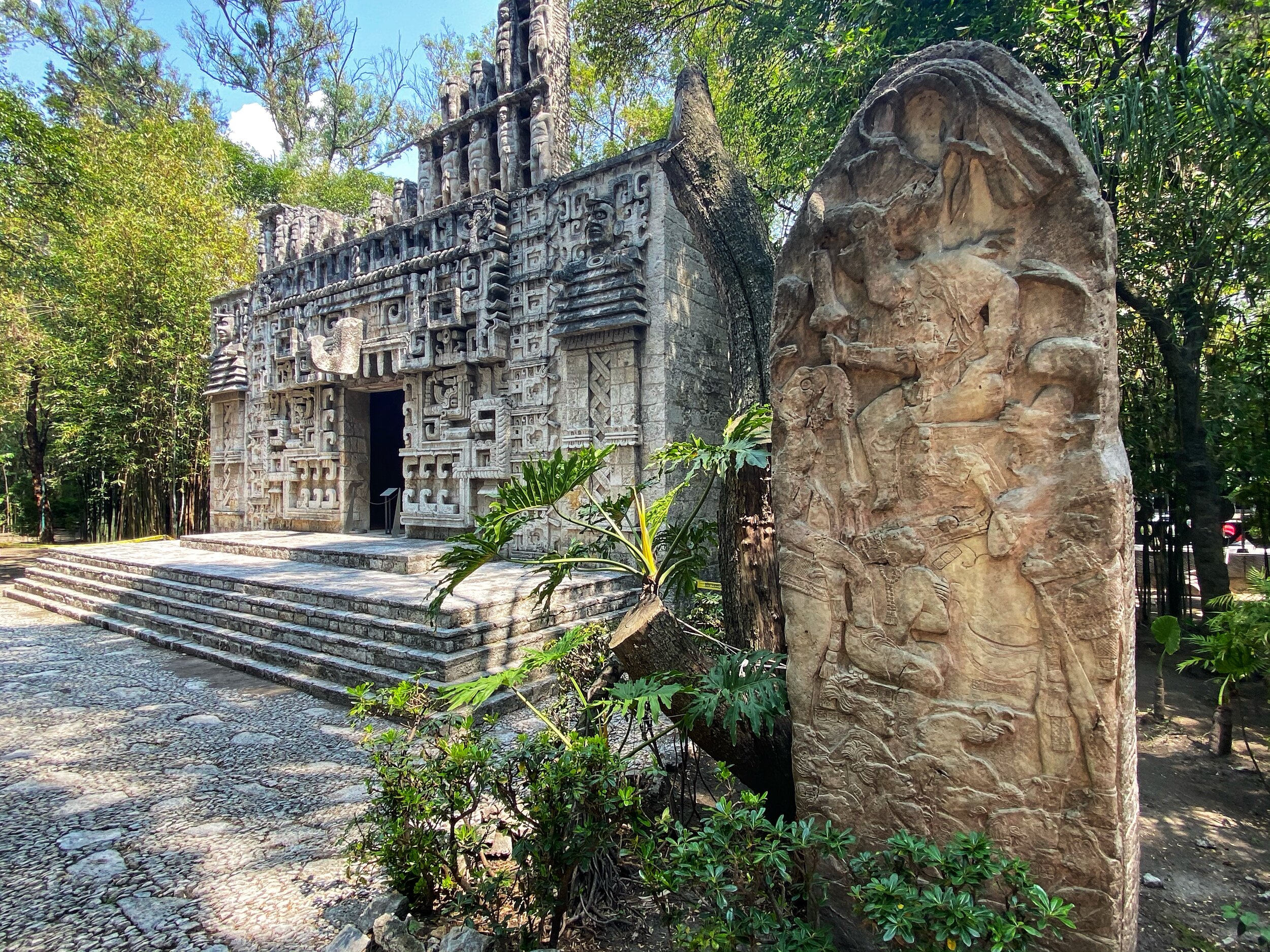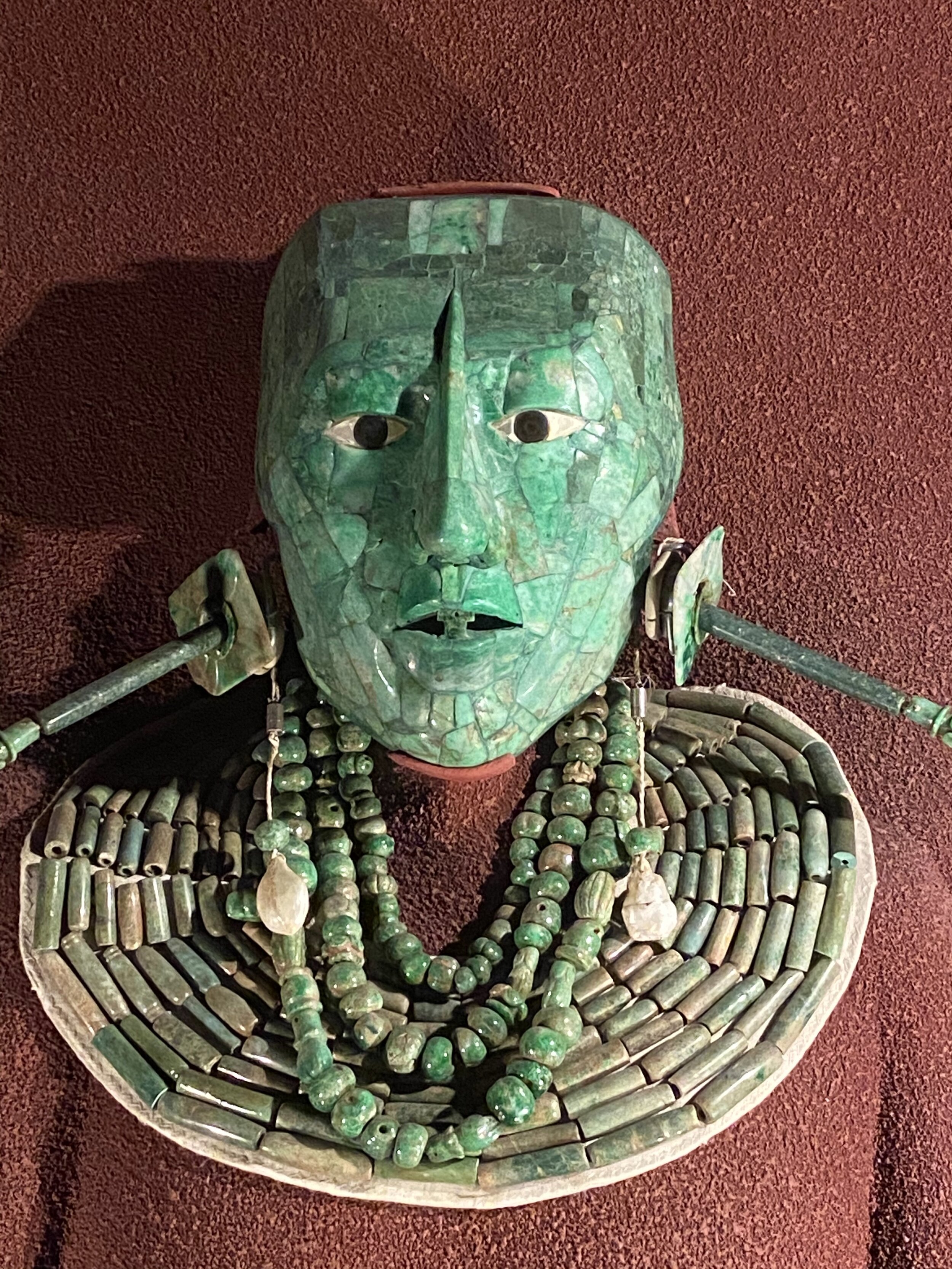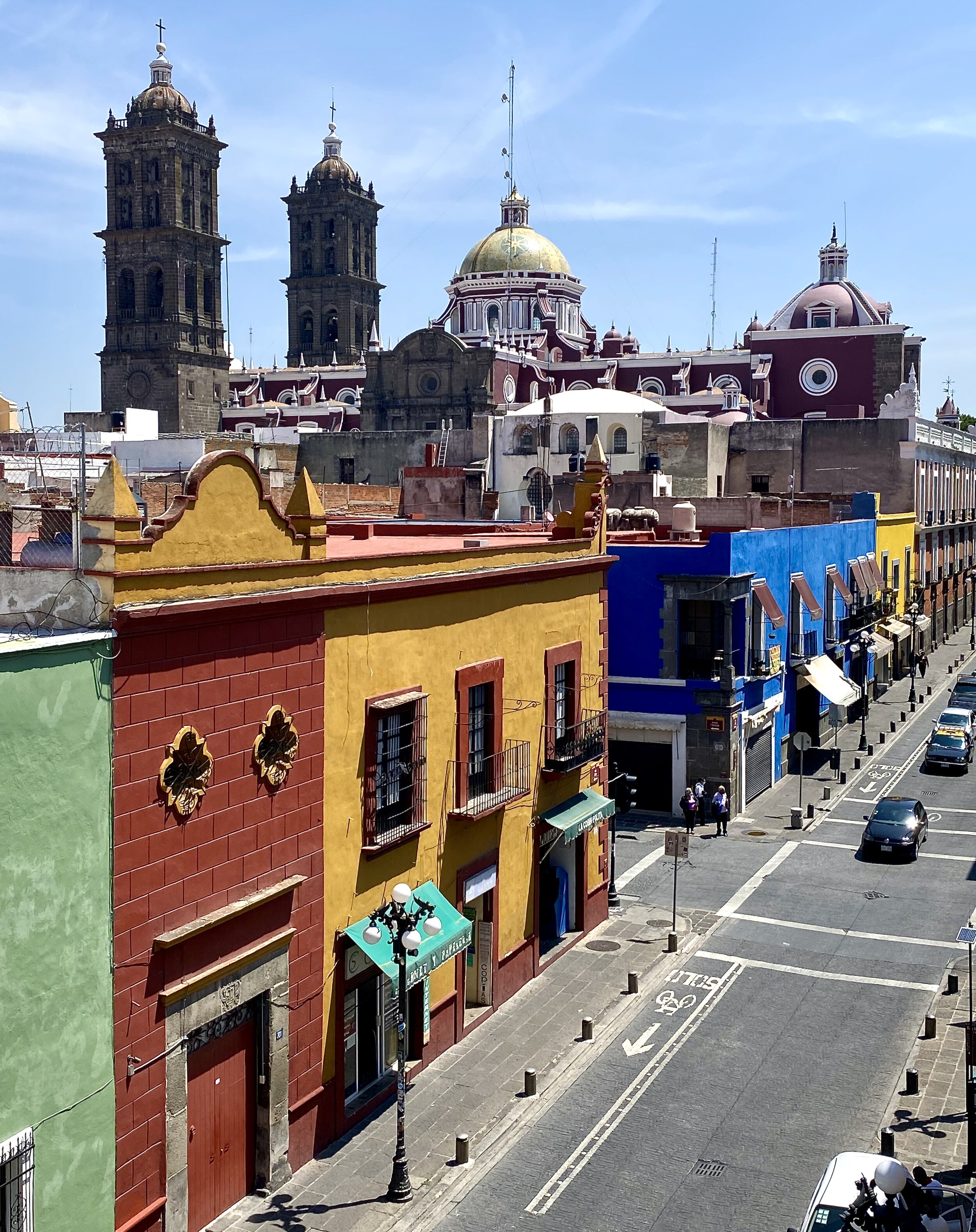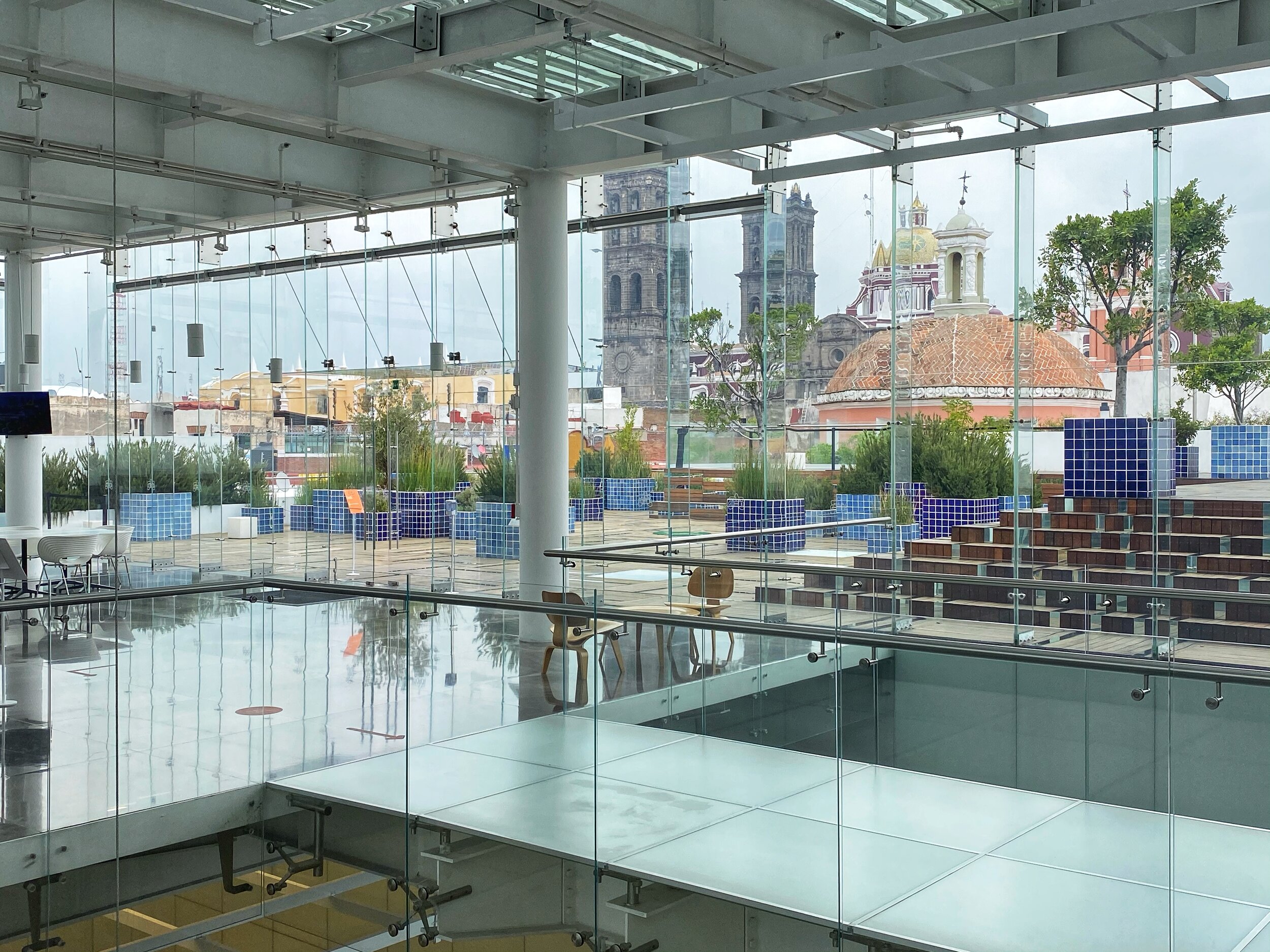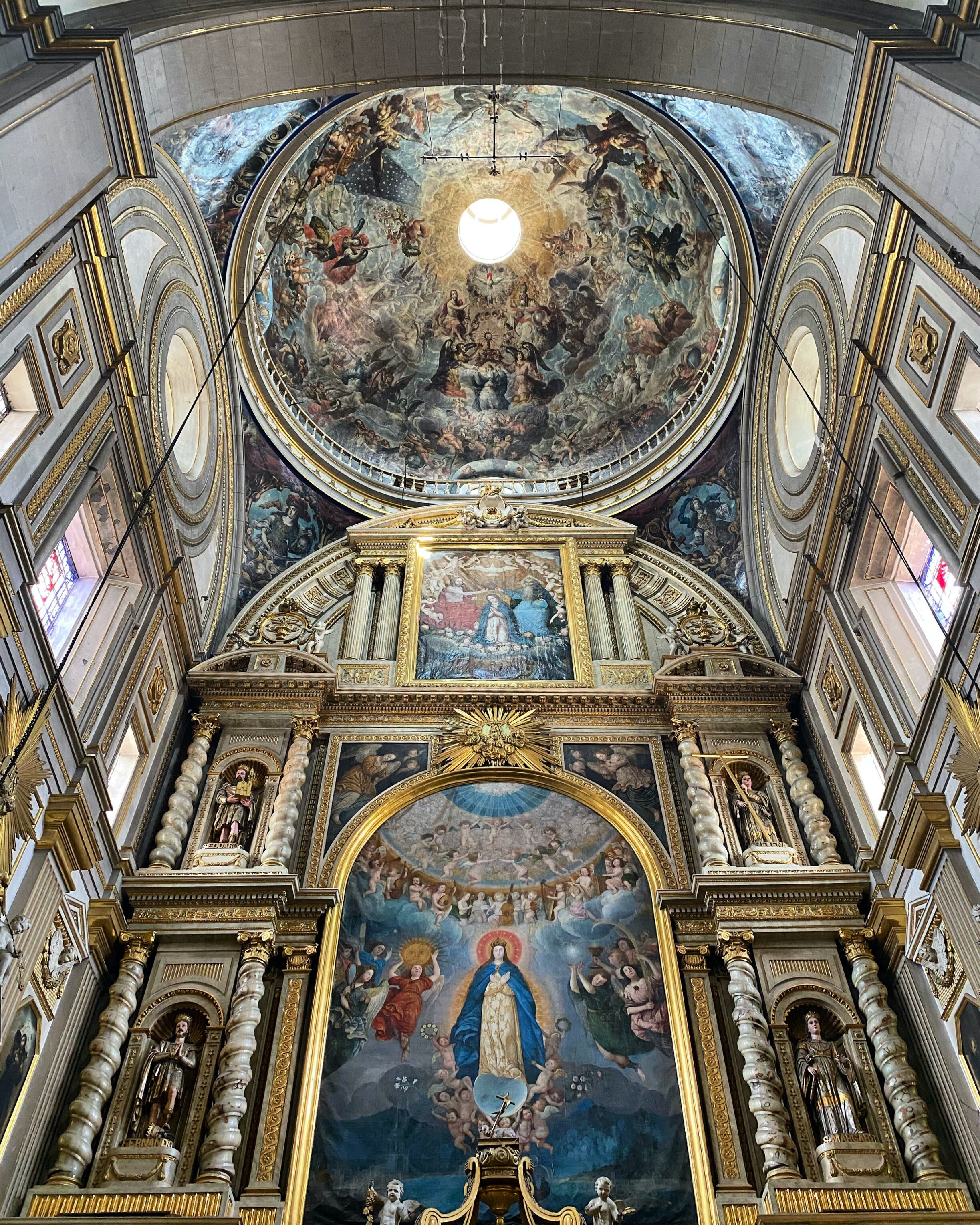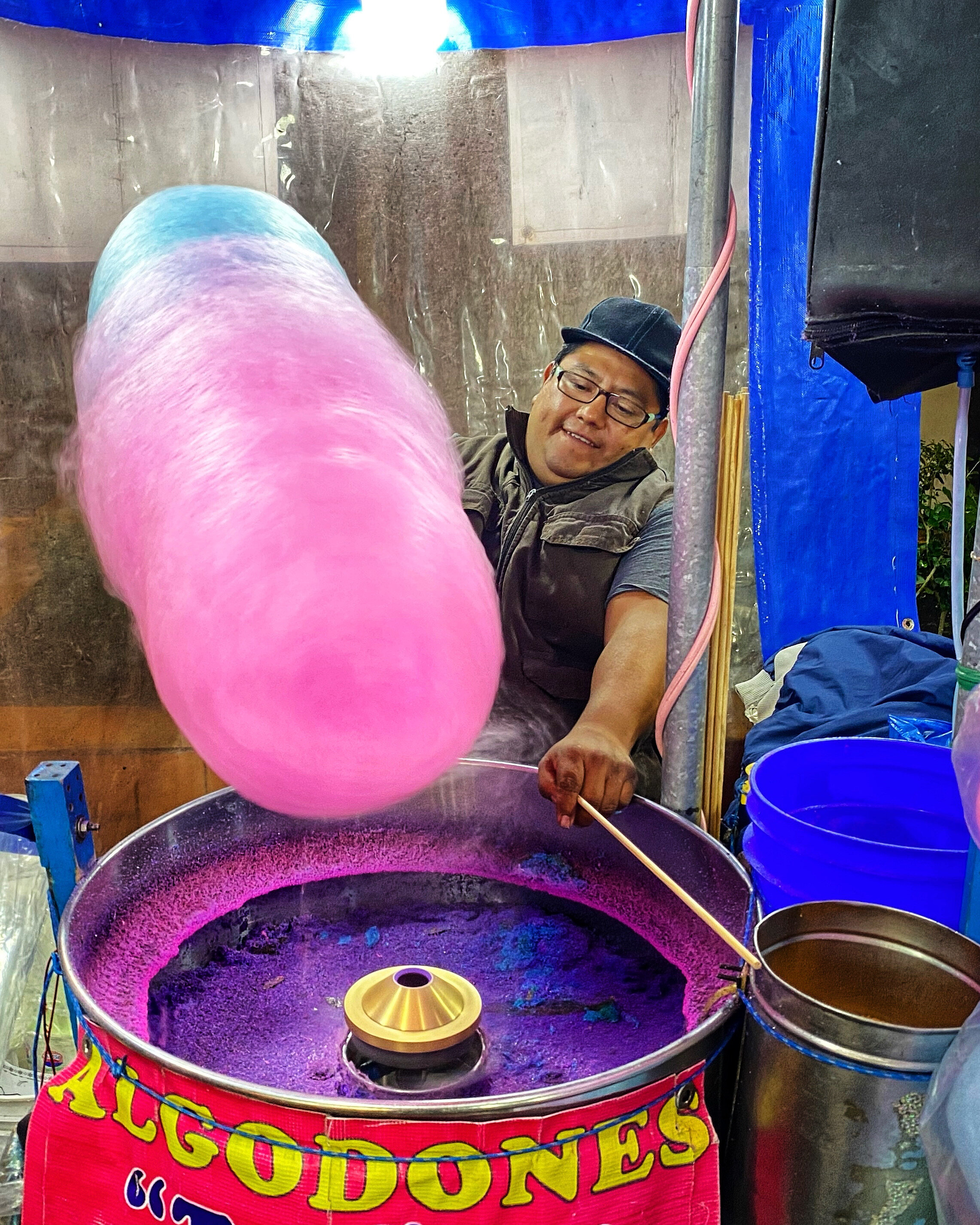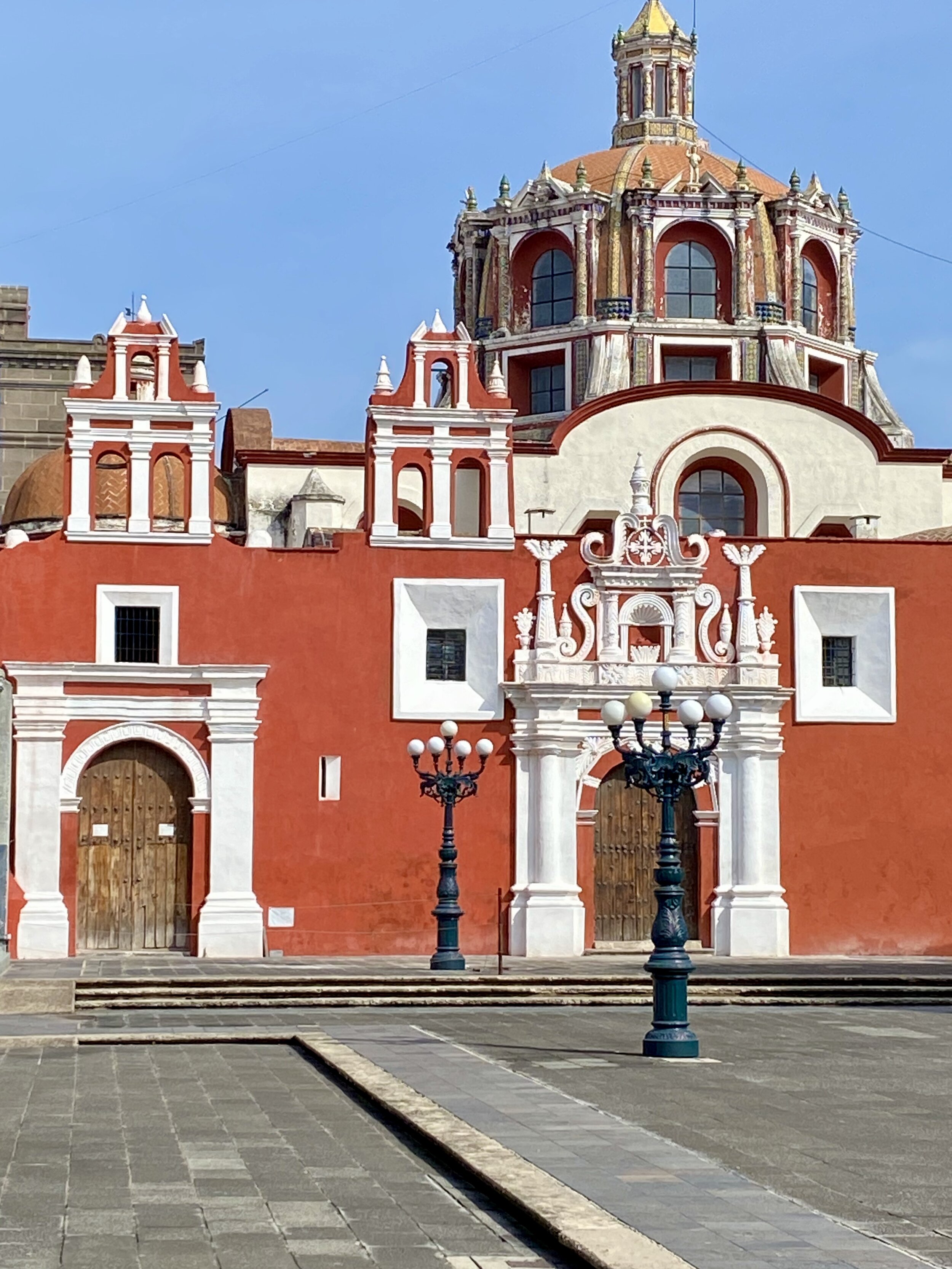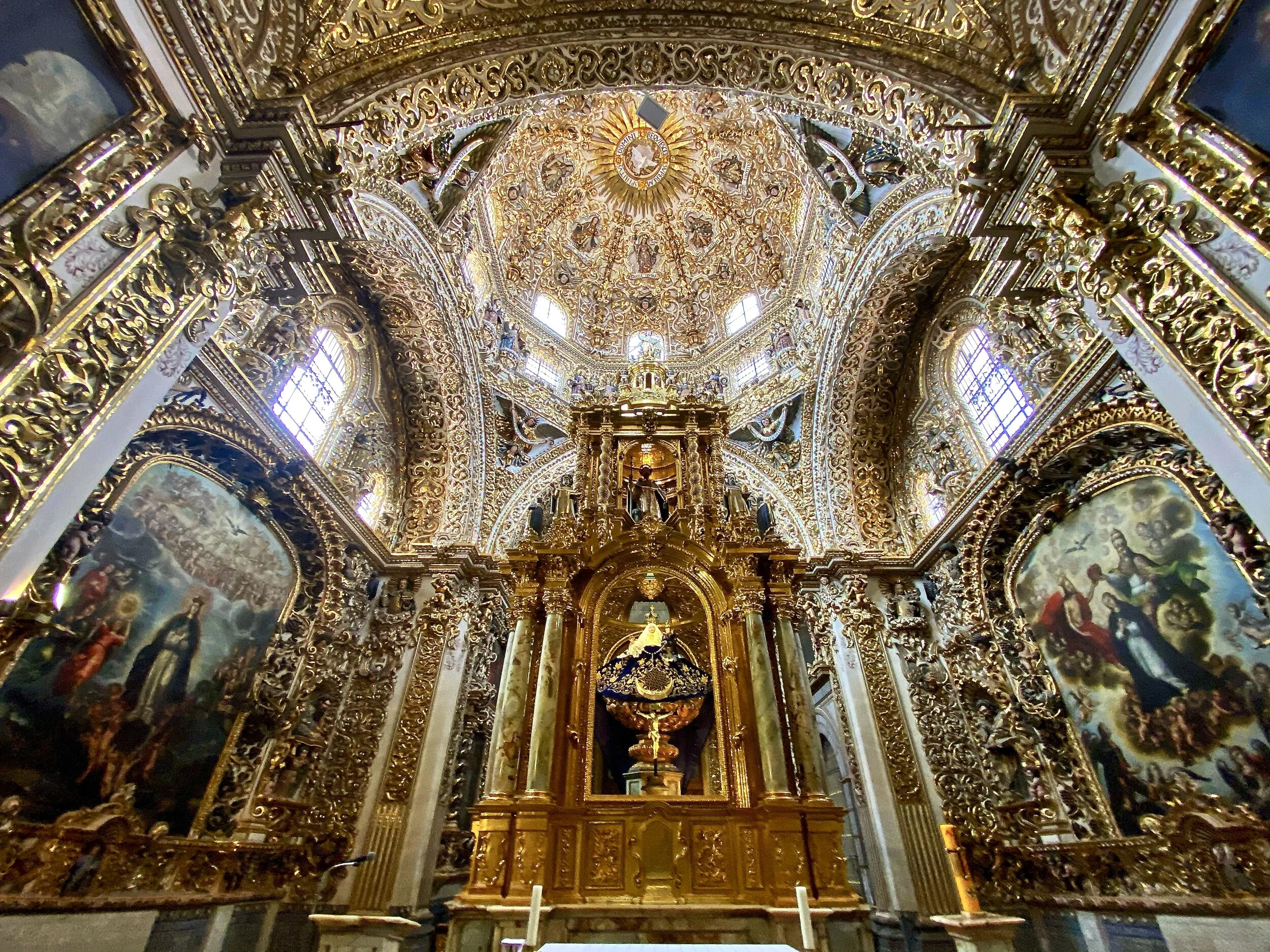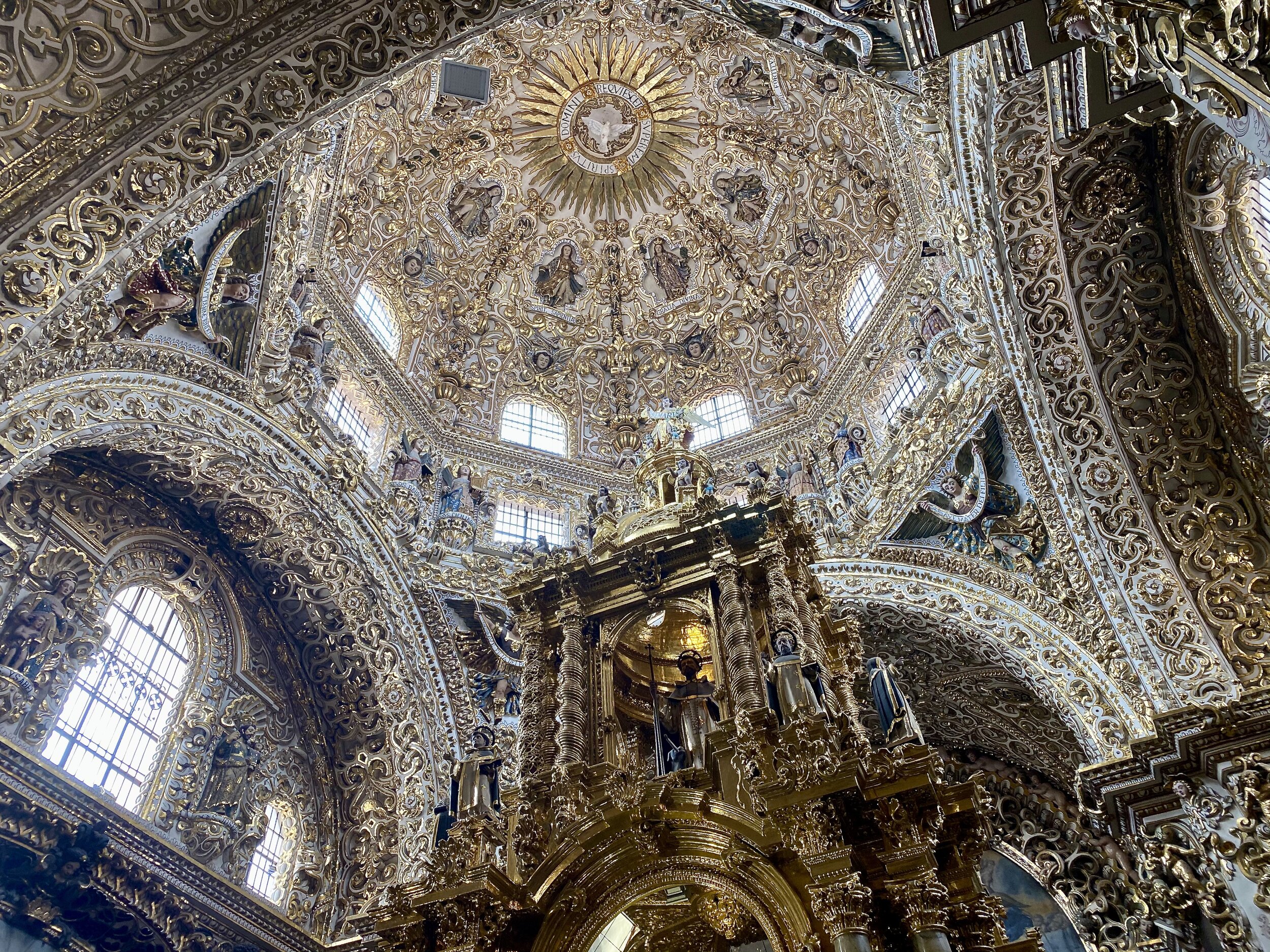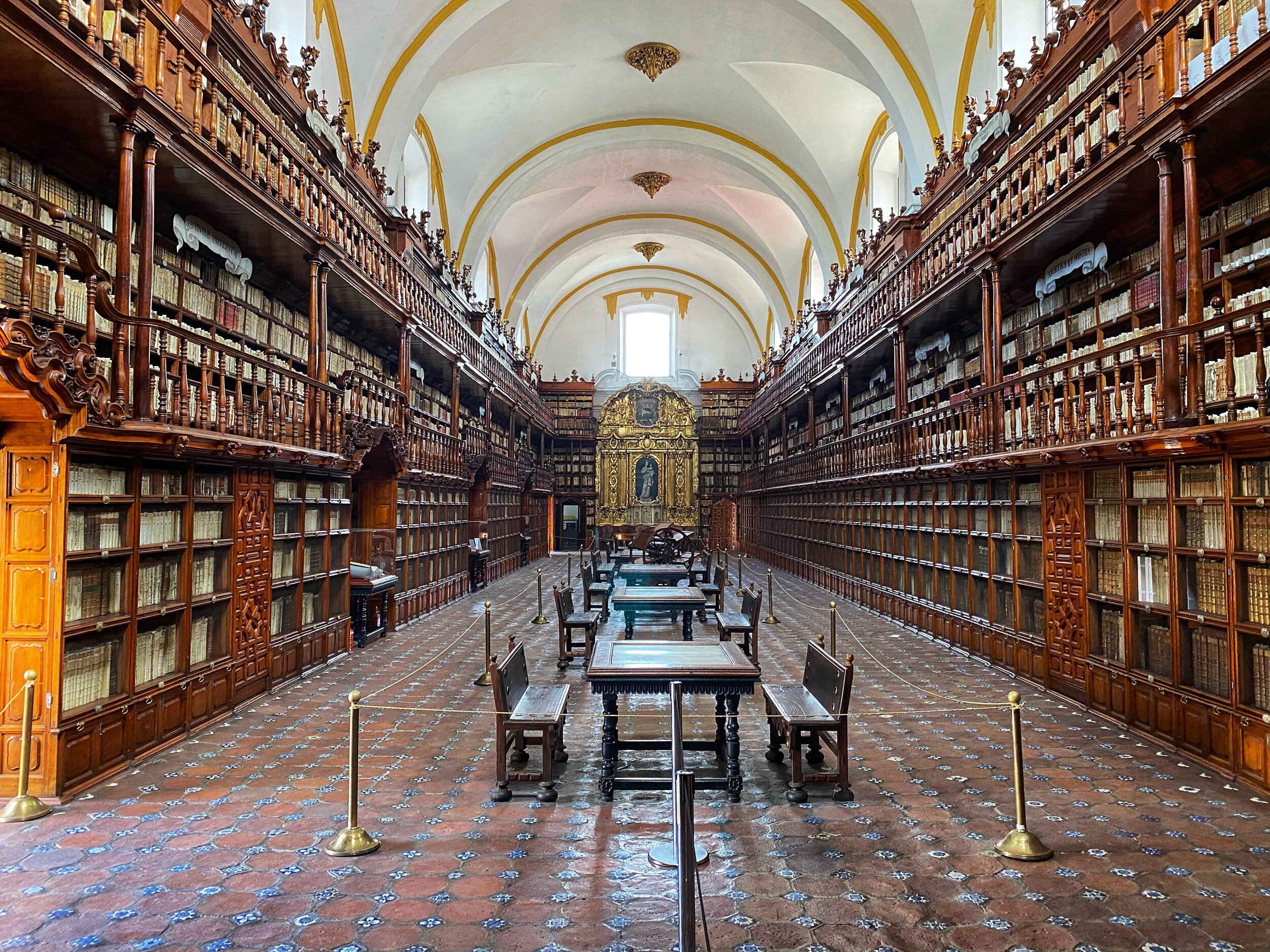Mexico City or CDMX is the heart of Mexico. With 30 million people, it is the size of a small country. It is home to an incredible variety of interesting things to see and do. The city has been built on top of the capital of the Aztec Empire, Templo Mayor. The entire old section of Mexico City is one large archeological site with new discoveries being made every year.
The city is home of very vibrant cultural scene with something for everyone. It is also home to one of the greatest Anthropological and Archeological museums in the world. The massive volcanoes in the vicinity of the City offer fantastic climbing and hiking opportunities.
Only 50 km away is the mysterious archeological site of Teotihuacan with massive pyramids of the Sun and Moon. The origin of this ancient civilization predating the Aztecs is unknown. After visiting Mexico City for the first time in 2021 (during my excursion to Pico Orizaba), I was so impressed that i returned for a longer stay in 2024. I am sure it is not my last time visiting this wonderful place.
Teotihuacan is an ancient Mesoamerican city located 30 miles (50 km) northeast of modern-day Mexico City. The city, which was designated a UNESCO World Heritage Site in 1987, was settled as early as 400 B.C. and became the most powerful and influential city in the region by 400 A.D. By the time the Aztecs found the city in the 1400s and named it Teotihuacan (meaning “the place where the gods were created”), the city had been abandoned for centuries. Teotihuacan’s origins, history, and culture largely remain a mystery. (www.history.com)
Teotihuacan (also written Teotihuacán) is arranged in a grid layout that covers about 8 square miles (20 square kilometers). It contains around 2,000 single-story apartment compounds, as well as various pyramids, plazas, temples and palaces of nobles and priests.
The main buildings of Teotihuacan are connected by the Avenue of the Dead (or Miccaotli in the Aztec language Nahuatl). The Avenue of the Dead is a 130-foot- (40-meter-) wide, 1.5-mile- (2.4-km-) long road that’s oriented slightly east (15.5 degrees) of true north and points directly at the nearby sacred peak of Cerro Gordo, an extinct volcano. (www.history.com)
Temple of Quetzalcoatl (the Feathered Serpent).
The city contains several large, important structures: The Pyramid of the Moon, the Pyramid of the Sun, the Ciudadela (“Citadel”) and the Temple of Quetzalcoatl (the Feathered Serpent).
Surrounded by smaller pyramids and platforms, the Pyramid of the Moon is situated at the northern end of the Avenue of the Dead and faces south. Standing at 140-feet (43-meters) high with a base measuring 426 by 511 feet (130 by 156 meters), the Pyramid of the Moon is the second largest structure in Teotihuacan.
Less than half a mile south of the Pyramid of the Moon stands the largest structure in Teotihuacan, the Pyramid of the Sun. Facing west, the pyramid stands at 216 feet (66 meters) with a base measuring approximately 720 by 760 feet (220 by 230 meters). Lining the immense Avenue of the Dead, the unique group of sacred monuments and places of worship in Teotihuacan (the Pyramids of the Sun, the Moon and Quetzalcoatl and the Palaces of Quetzalmariposa, the Jaguars, of Yayahuala and others) constitutes an outstanding example of a pre-Columbian ceremonial center.
Teotihuacan had a hierarchical society. Large palaces surround the pyramids. The homes of the ruling class were decorated with colorful murals and intricate carvings. Thousands of smaller standardized apartment compounds spread around the city in a grid. The similarity of these buildings and their careful placement suggest that a powerful ruling class directed their construction. Most of these apartments held extended families, which produced the city's trade goods, like obsidian tools, in their homes.
Little is known about the language, politics, culture and religion of the Teotihuacan people. They had a glyph-based written language, but it may have been limited to dates and names.
The art and architecture of the city shows it was a polytheistic society, with the primary deity being the Great Goddess of Teotihuacan, which is depicted as a spider goddess. Other deities include Quetzalcoatl (a vegetation god whose meaning changed in subsequent civilizations), the rain god Tlaloc, and the god of spring Xipe Totec, among others.
One of the very few original murals in Teotihuacan remaining in its original place. The mural depicts a jaguar.
Chalchiuhtlicue ("jade" and cuēitl "skirt") "She of the Jade Skirt", is an Aztec deity of water, rivers, seas, streams, storms, and baptism. Chalchiuhtlicue is associated with fertility and she is the patroness of childbirth. Chalchiuhtlicue was highly revered in Aztec culture at the time of the Spanish conquest and she was an important deity figure in the Postclassic Aztec realm of central Mexico. Chalchiuhtlicue belongs to a larger group of Aztec rain gods and she is closely related to another Aztec water god, Chalchiuhtlatonal.
Mexico City
Museo Soumaya, a Modern Art museum in Mexico City
Museo Jumex - modern art museum with a great coffee shop
Mexico City - in the old city
The history of the Metropolitan Cathedral’s creation spans three centuries, from 1573-1813. So it makes sense that the architecture is an amalgamation of the three distinct styles which dominated during the lengthy process of its construction; Baroque, Neo-Classic and Neo-Renaissance. Prompted in 1544 by a need to replace the original church that formerly occupied the site following the conquest of Aztec hub Tenochtitlán, not even three centuries of development could make sure the foundations were sufficiently resilient. The cathedral – much like the rest of Mexico City – gradually sinks year after year into the shifting lake upon which it was built.
The impressive bell towers are of Xalapan design and house a total of twenty-five bells. The largest of these, Santa Maria de Guadalupe, weighs in at 13,000 kilos.
Numerous works of art, religious relics and crypts adorn every orifice, including in the sixteen chapels. Gold coats every surface and towering ceilings add to the grandeur of the Altars of Forgiveness and of the Kings. The Altar of Forgiveness was damaged in a 1967 fire along with the Americas’ biggest 18th century organs. This fire led to the discovery of previously hidden treasures, including over fifty paintings, historical documents concerning Hernán Cortes and the burial place of first governor of Veracruz, Miguel Barrigan.
The Crypt of the Archbishops is located below the floor of the cathedral beneath the Altar of the Kings. The entrance to the crypt from the cathedral is guarded by a large wooden door behind which descends a winding yellow staircase. Just past the inner entrance is a Mexica-style stone skull. It was incorporated as an offering into the base of a cenotaph to Juan de Zumárraga, the first archbishop of Mexico. Zumárraga was considered to be a benefactor of the Indians, protecting them against the abuses of their Spanish overlords.
The Templo Mayor (was the main temple of the Mexica people in their capital city of Tenochtitlan, which is now Mexico City. The temple was called the Huēyi Teōcalli in the Nahuatl language. It was dedicated simultaneously to Huitzilopochtli, god of war, and Tlaloc, god of rain and agriculture, each of which had a shrine at the top of the pyramid with separate staircases. The spire in the center of the adjacent image was devoted to Quetzalcoatl in his form as the wind god, Ehecatl. The Great Temple devoted to Huitzilopochtli and Tlaloc, measuring approximately 100 by 80 m (328 by 262 ft) at its base, dominated the Sacred Precinct. Construction of the first temple began sometime after 1325, and it was rebuilt six times. The temple was destroyed by the Spanish in 1521 to make way for the new cathedral.[
The Templo Mayor
In the main square of Mexico City
A purification ceremony by a shaman.
The shamans offer various healings.
The workshop of a shaman.
The incredible Museum of Anthropology in Mexico City
The beautiful fountain in the Museum of Anthropology
Recreation of Mayan Ruins in the Museum of Anthropology
The Olmec colossal heads are stone representations of human heads sculpted from large basalt boulders. They range in height from 1.17 to 3.4 metres (3.8 to 11.2 ft). The heads date from at least 900 BC and are a distinctive feature of the Olmec civilization of ancient Mesoamerica. All portray mature individuals with fleshy cheeks, flat noses, and slightly crossed eyes; their physical characteristics correspond to a type that is still common among the inhabitants of Tabasco and Veracruz. The backs of the monuments often are flat. The boulders were brought from the Sierra de Los Tuxtlas mountains of Veracruz. Given that the extremely large slabs of stone used in their production were transported over large distances (over 150 kilometres (93 mi)), requiring a great deal of human effort and resources, it is thought that the monuments represent portraits of powerful individual Olmec rulers. Each of the known examples has a distinctive headdress. The heads were variously arranged in lines or groups at major Olmec centres, but the method and logistics used to transport the stone to these sites remain unclear. They all display distinctive headgear and one theory is that these were worn as protective helmets, maybe worn for war or to take part in a ceremonial Mesoamerican ballgame.
The Olmecs were the first inhabitants of the Americas to construct monumental architecture and to settle in towns and cities. They were also the first people in the Americas to develop a sophisticated style of stone sculpture. In the first decade of the 21st century evidence emerged of Olmec writing, with the earliest examples of Olmec hieroglyphs dating to around 650 BC. Examples of script have been found on roller stamps and stone artefacts; the texts are short and have been partially deciphered based on their similarity to other Mesoamerican scripts. The evidence of complex society developing in the Olmec heartland has led to the Olmecs being regarded as the "Mother Culture" of Mesoamerica, although this concept remains controversial.
Pakal was buried in a colossal sarcophagus in the largest of Palenque's stepped pyramid structures, the building called Bʼolon Yej Teʼ Naah "House of the Nine Sharpened Spears"in Classic Maya and now known as the Temple of the Inscriptions. Though Palenque had been examined by archaeologists before, the secret to opening his tomb — closed off by a stone slab with stone plugs in the holes, which had until then escaped the attention of archaeologists—was discovered by Mexican archaeologist Alberto Ruz Lhuillier in 1948. It took four years to clear the rubble from the stairway leading down to Pakal's tomb, but it was finally uncovered in 1952. His skeletal remains were still lying in his coffin, wearing a jade mask and bead necklaces, surrounded by sculptures and stucco reliefs depicting the ruler's transition to divinity and figures from Maya mythology. Traces of pigment show that these were once colorfully painted, common of much Maya sculpture at the time.[
The iconography from the burial stone of Pacal. Pakal's tomb has been the subject of ancient astronaut hypotheses since its appearance in Erich von Däniken's 1968 best-seller Chariots of the Gods? Von Däniken reproduced a drawing of the sarcophagus lid, incorrectly labeling it as being from "Copán" and comparing Pacal's pose to that of Project Mercury astronauts in the 1960s. Von Däniken interprets drawings underneath him as rockets, and offers it as possible evidence of an extraterrestrial influence on the ancient Maya.
In the center of that frame is a man sitting, bending forward. He has a mask on his nose, he uses his two hands to manipulate some controls, and the heel of his left foot is on a kind of pedal with different adjustments. The rear portion is separated from him; he is sitting on a complicated chair, and outside of this whole frame, you see a little flame like an exhaust.
Burial mask of Pakal
The Aztec sun stone (Spanish: Piedra del Sol) is a late post-classic Mexica sculpture housed in the National Anthropology Museum in Mexico City, and is perhaps the most famous work of Mexica sculpture. It measures 358 centimetres (141 in) in diameter and 98 centimetres (39 in) thick, and weighs 24,590 kg (54,210 lb). Shortly after the Spanish conquest, the monolithic sculpture was buried in the Zócalo, the main square of Mexico City. It was rediscovered on 17 December 1790 during repairs on the Mexico City Cathedral. Following its rediscovery, the sun stone was mounted on an exterior wall of the cathedral, where it remained until 1885. Early scholars initially thought that the stone was carved in the 1470s, though modern research suggests that it was carved some time between 1502 and 1521
Mictlantecuhtli was considered 6 feet (1.8 m) tall and was depicted as a blood-spattered skeleton or a person wearing a toothy skull. Although his head was typically a skull, his eye sockets did contain eyeballs. His headdress was shown decorated with owl feathers and paper banners and he wore a necklace of human eyeballs,while his earspools were made from human bones.
He was not the only Aztec god to be depicted in this fashion, as numerous other deities had skulls for heads or else wore clothing or decorations that incorporated bones and skulls. In the Aztec world, skeletal imagery was a symbol of fertility, health and abundance, alluding to the close symbolic links between life and death. He was often depicted wearing sandals as a symbol of his high rank as Lord of Mictlan. His arms were frequently depicted raised in an aggressive gesture, showing that he was ready to tear apart the dead as they entered his presence. In the Aztec codices, Mictlantecuhtli is often depicted with his skeletal jaw open to receive the stars that descend into him during the daytime.
Mictlāntēcutli, meaning "Lord of Mictlan"), in Aztec mythology, is a god of the dead and the king of Mictlan (Chicunauhmictlan), the lowest and northernmost section of the underworld. He is one of the principal gods of the Aztecs and is the most prominent of several gods and goddesses of death and the underworld. The worship of Mictlantecuhtli sometimes involved ritual cannibalism, with human flesh being consumed in and around the temple. Other names given to Mictlantecuhtli include Ixpuztec (“Broken Face”), Nextepehua (“Scatterer of Ashes”), and Tzontemoc (“He Who Lowers His Head”).
Two life-size clay statues of Mictlantecuhtli were found marking the entrances to the House of Eagles to the north of the Great Temple of Tenochtitlan.
There were several different ways these sacrifices occurred. The most common ways were decapitation and heart removal. Dedication to a new building or new ruler required a human sacrifice. Many of these were depicted in Maya artwork and sometimes took place after the victim was tortured (beaten, scalped, burned, etc.). If the sacrifice happened through heart removal it took place in the courtyard of the temple or summit of the pyramid-temple. The person was painted blue and wore a headdress while being held down by four attendants representing the cardinal directions. The nacom, or official, used a sacrificial knife to cut into the victims chest and pull out the heart. He then would pass the heart to the priest, known as the chilan, where then the blood would be smeared onto the image of the god. Once this occurred, the body was thrown down the steps and skinned by assistant priests but the hands and feet were left alone. The chilan then wore the skin of the victim and performed a ritual dance of rebirth.
Officially known as the "Templo Expiatorio a Cristo Rey," the first structure of the old basilica was begun in 1695 and it was not finished until 1709. The major architect was Pedro de Arrieta. It is characterized by its doric interior and marble statues of Fray Juan de Zumárraga, archbishop at the time it was started, and Juan Diego, the peasant who saw the vision of the Virgin Mary. These are featured in the altarpiece that originally held the image of Our Lady of Guadalupe. (That altarpiece matches a similar one in the older chapel higher on the hill, which features the archangels Gabriel and Michael). The church was granted basilica status by Pope Pius X in 1904.
The icon of Juan Diego's cloak was housed in this church from 1709 to 1974. In 1921 a bomb planted in a flower vase near the altar by an anticlerical terrorist exploded, causing great damage to the interior of the building. (In memory of this incident, the New Basilica displays an iron crucifix called "the attempt on Christ".) The cloak survived undamaged.
As much of Mexico City is built upon the dried lakebed of Lake Texcoco, the land was unstable and the old basilica was sinking. A new, more spacious basilica was built.
The Basilica of Our Lady of Guadalupe (Spanish: Basílica de Nuestra Señora de Guadalupe) is a Roman Catholic church, basilica, and National shrine of Mexico which houses the cloak containing the image of Our Lady of Guadalupe. The 1709 shrine was built in the North of Mexico City near the hill of Tepeyac, where the Virgin Mary is believed to have appeared to Saint Juan Diego Cuauhtlatoatzin. The basilica structure which now contains Juan Diego's cloak was completed in 1974.
This site is also known as La Villa de Guadalupe or, in a more popular sense, La Villa, and has several churches and related buildings.
One of the most important pilgrimage sites of Catholicism, the basilica and tilma (cloak) are visited by several million people every year, especially around 12 December, Our Lady of Guadalupe's Feast day.
Our Lady of Guadalupe
The Church of San Francisco Acatepec in Cholula
The Church of San Francisco Acatepec in Cholula
The interior of the Church of San Francisco Acatepec in Cholula
Mercado Central in Cholula
Mercado Central of Cholula - Medicinal Herbs
One of many churches in Cholula
The San Gabriel church and friary in Cholula, Puebla, was established in 1529 by the Order of Friar Minors, OFM, Franciscans, on top of the destroyed temple to Quetzalcoatl with evangelization as its initial purpose. The current complex was built in the 1540s, beginning with the Capilla Real in 1540.
Old tombstones by the St. Gabriel Church in Cholula.
Puebla, also known in Spanish as Puebla de Zaragoza, formally Heroica Puebla de Zaragoza and in colonial times as Puebla de los Ángeles, is the seat of Puebla Municipality, the capital and largest city of the state of Puebla, and the second largest in colonial Mexico and the richest Catholic diocese.
The historical and cultural value of Puebla's architecture is a major reason the city was chosen as a UNESCO World Heritage Site. Various styles and techniques such as Baroque, Renaissance and Classic are represented here in over 5,000 buildings included in the catalogue. The historic centre is filled with churches, monasteries, mansions and the like, mostly done in gray cantera stone, red brick and decorated with multicolored tiles. Puebla is also considered to be the "cradle of Mexican Baroque" both in architecture and in the decorative arts, and one of the five most important colonial cities in Mexico.
Beautiful Puebla
Food market in Puebla
Puebla
Museo Apmaro in Puebla
Puebla
Amazing colours of Puebla
Delicious street food in Puebla by Dona Rita!
The Chapel of the Virgen del Rosario is the chapel attached to the Church of Santo Domingo in the city of Puebla, Puebla, Mexico. Work of the 17th century, summit of the New Spanish Baroque, was described in its time as the Eighth Wonder of the World. by Friar Diego de Gorozpe, in a print of 1690, regarded like this for a long time in the New Spain, as well as La Casa de Oro (The Golden House) and Domus Aurea. It is one of the most prominent examples of the New Spanish Baroque and one of the greatest artistic-religious achievements in Mexico. It is a chapel full of symbolisms, where each element represents something related to the Catholicism and Dominican Order.
The cult of the Our Lady of the Rosary was promoted by the Dominican Order, who dedicated in each of their convents a chapel to their devotion. In Mexico it was no exception when the first religious of the order arrived in 1526, but it was not until the year of 1531 when they began the construction of their first important church in Puebla, which is also dedicated to the Archangel Michael however the Chapel of the Rosario was conceived until 1650 and completed and consecrated on 16 April 1690.
It was the first in Mexico dedicated to the Our Lady of the Rosary. Its construction served a double purpose: to worship the Virgin and teach the faithful the prayer of the Holy Rosary.
The Dome is full of important symbolism:
(a) In the dome, the Divine Grace (Gratia Divina) carries in its hands the palm leaf that symbolizes martyrdom, and the laurel branch of victory. Grace, without which there is no valid virtue, represents the origin of everything divine on earth; it is accompanied with the gifts of the Holy Spirit:
(b) Understanding (Spiritus Intellectus)
(c) Fortitude (Spiritus Fortitudinis)
(d) Piety (Spiritus Pietatis)
(e) Fear of God (Spiritus Timoris)
(f) Knowledge (Spiritus Scientiae)
(g) Counsel (Spiritus Consilii) and
(h) Wisdom (Spirit Sapientiae), qualities represented by female figures. Through these symbols one learns that having faith, hope and charity, being in grace and receiving the essential gifts, one can reach the supreme wisdom, represented by the dove of the Holy Spirit, which in the dome is shown wrapped between clouds and rays.
The common image of Our Lady of Guadalupe in the streets of Puebla.
Folk dance in the streets of Puebla.
Puebla folk dancer
A friendly musician in the streets of Puebla.
A ball store - it will probably disappear with the owner…
Rural Mexico is full of amazing sights!



